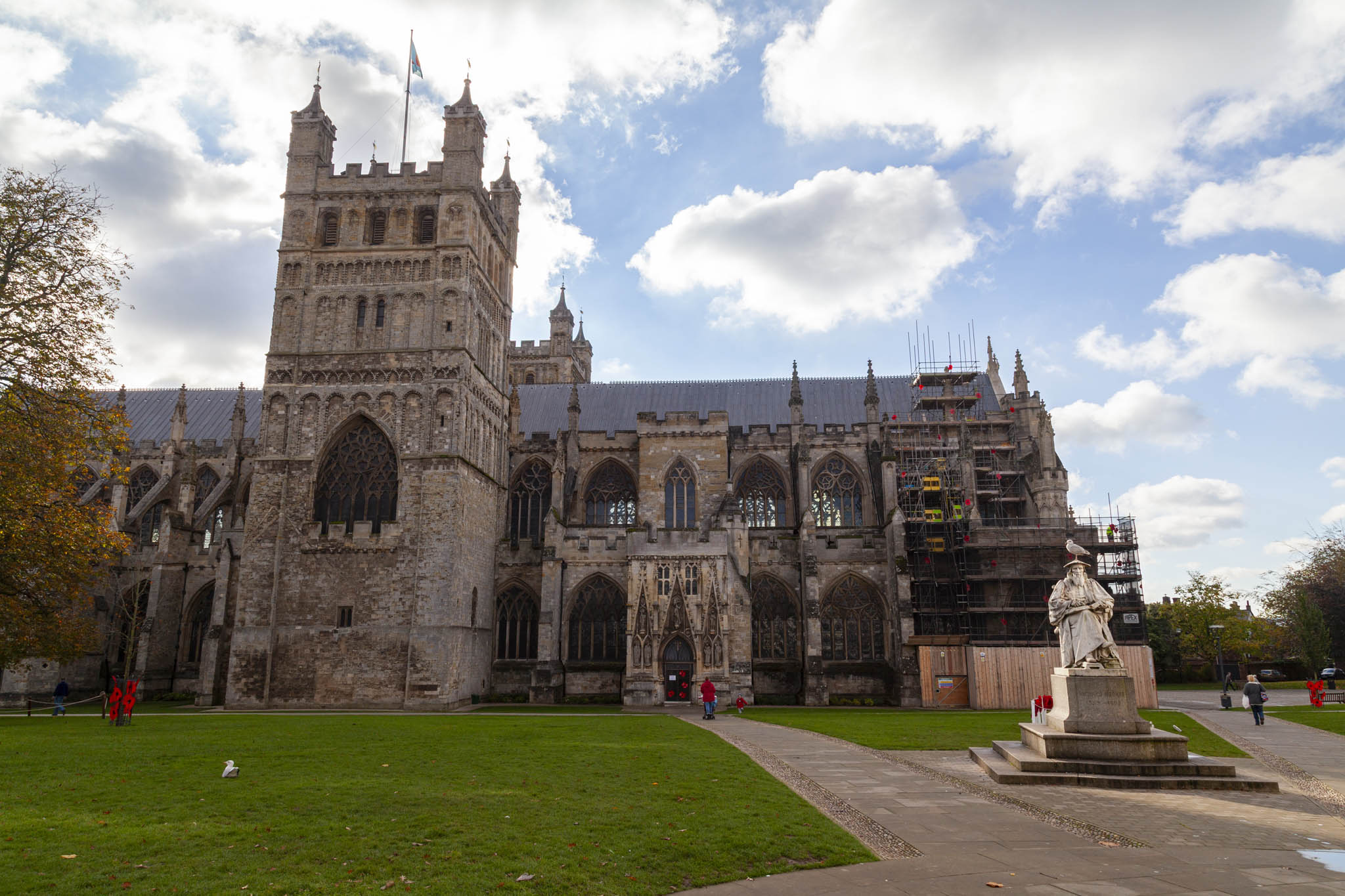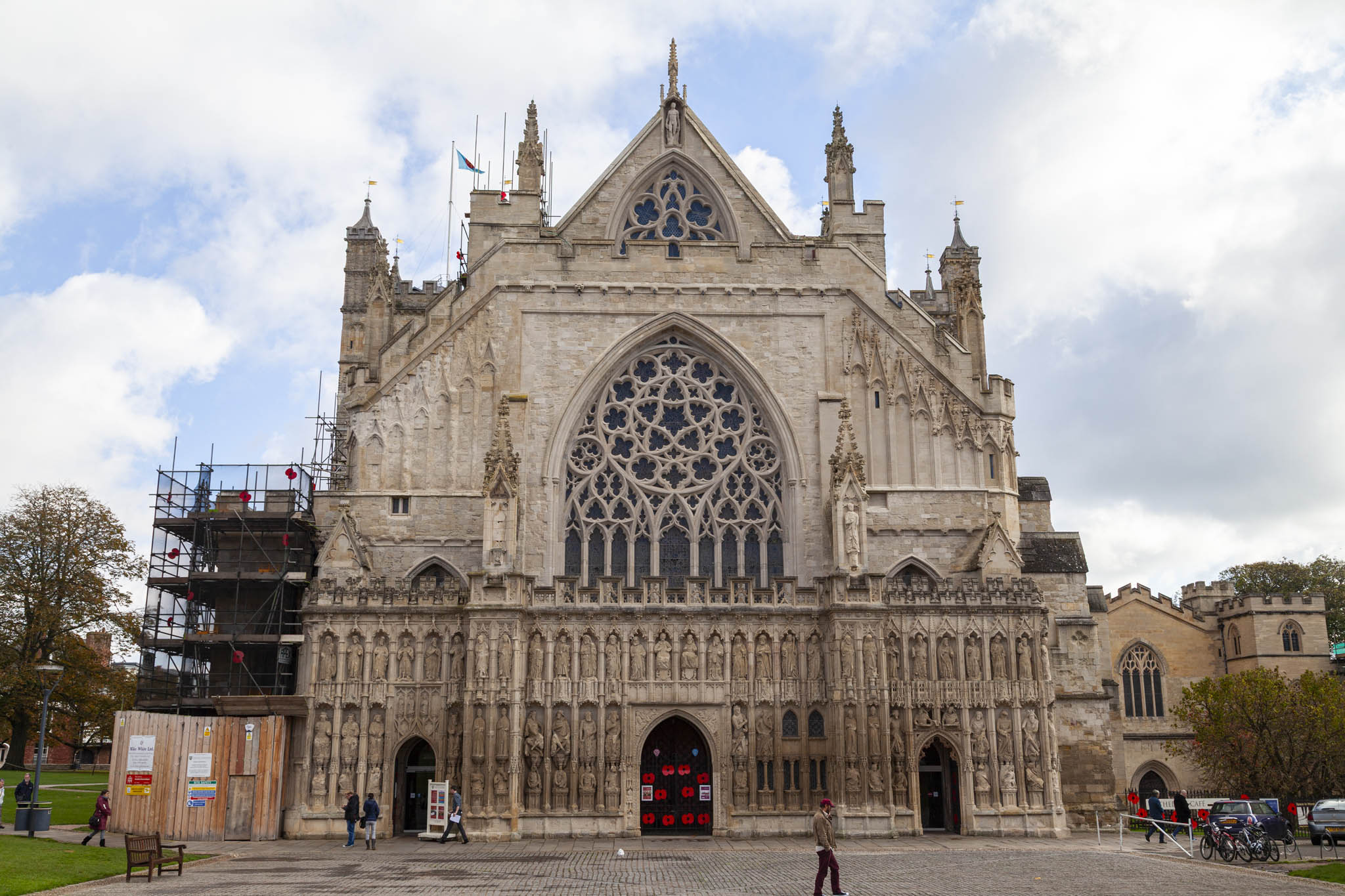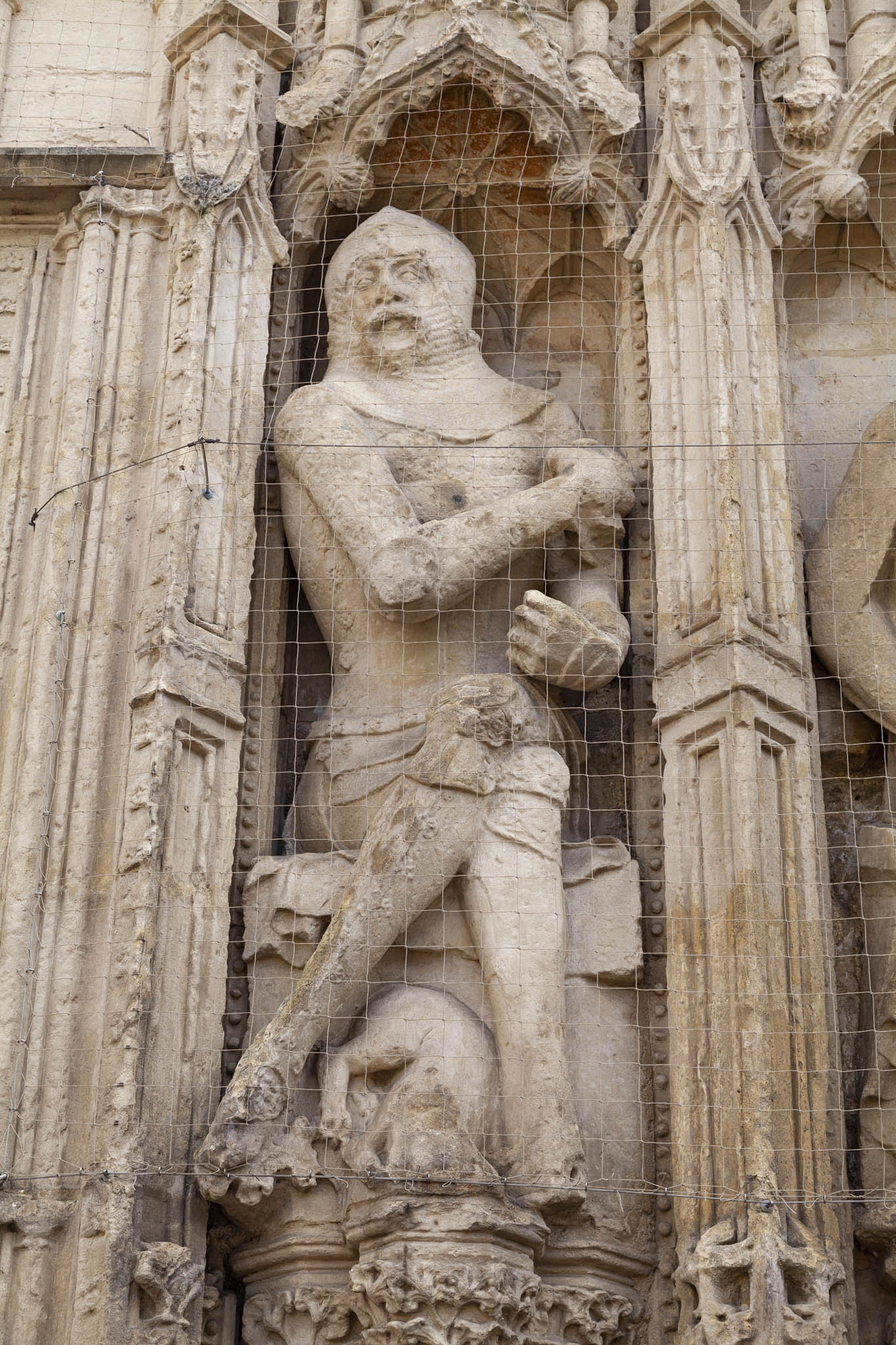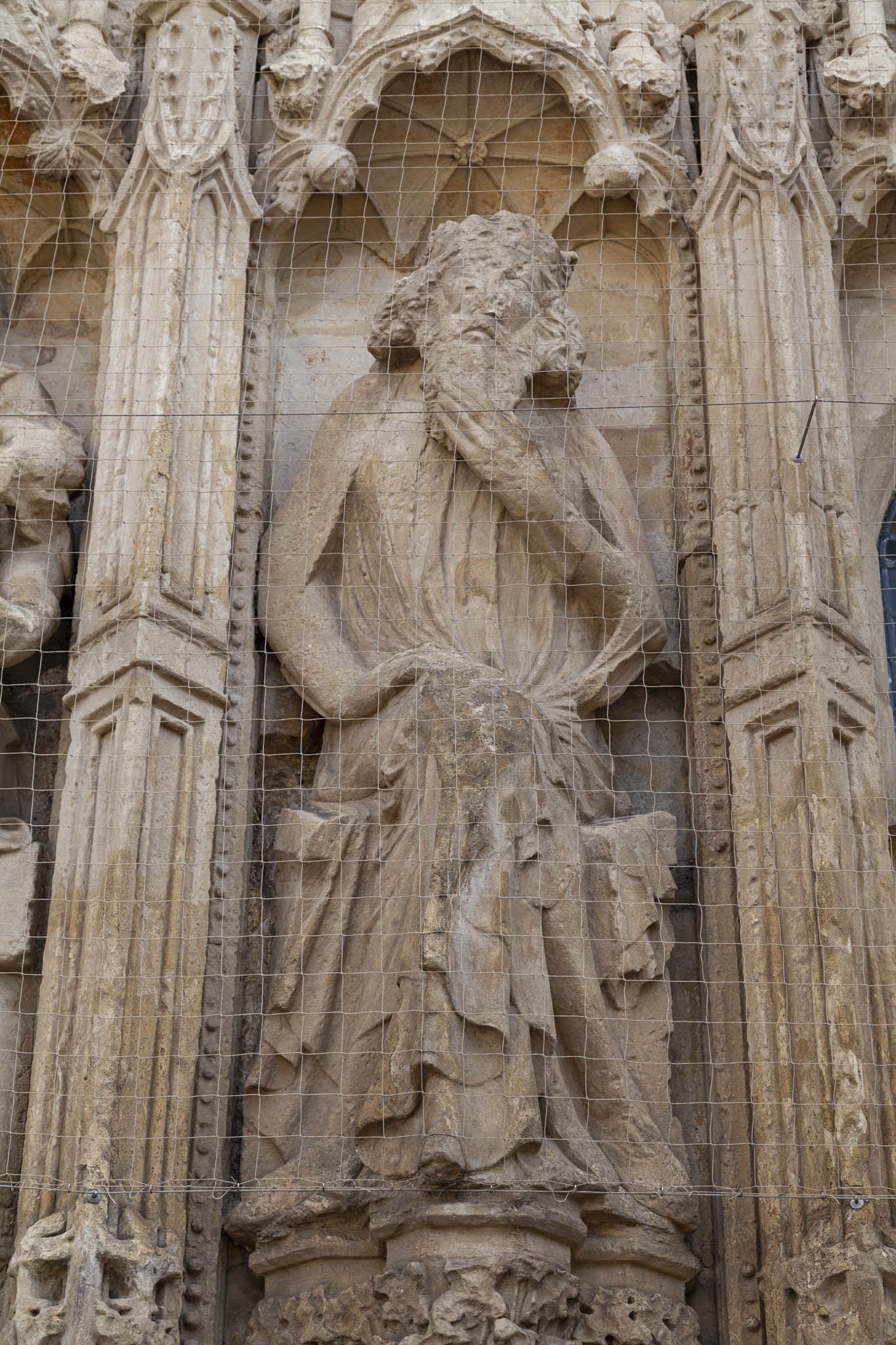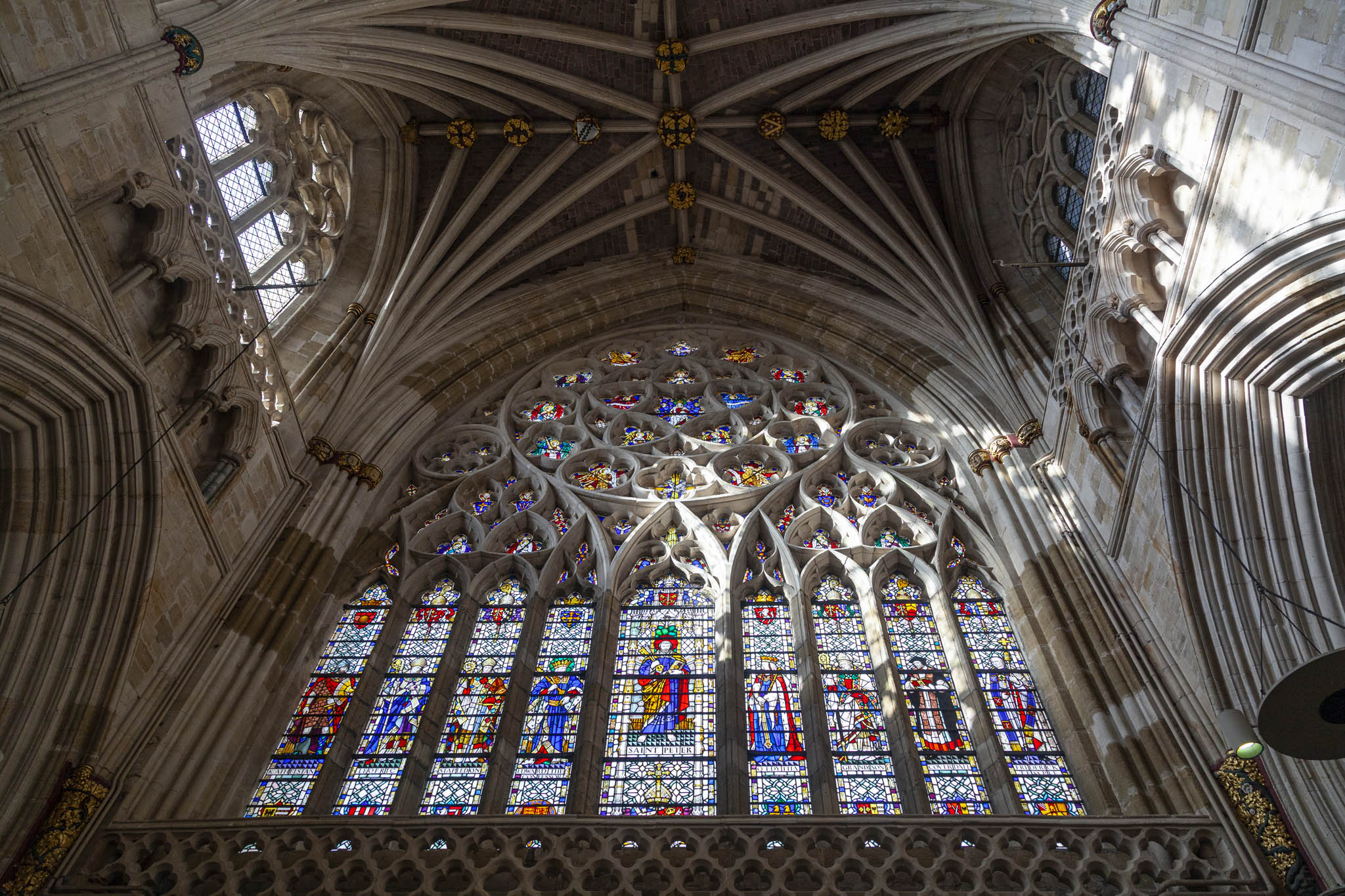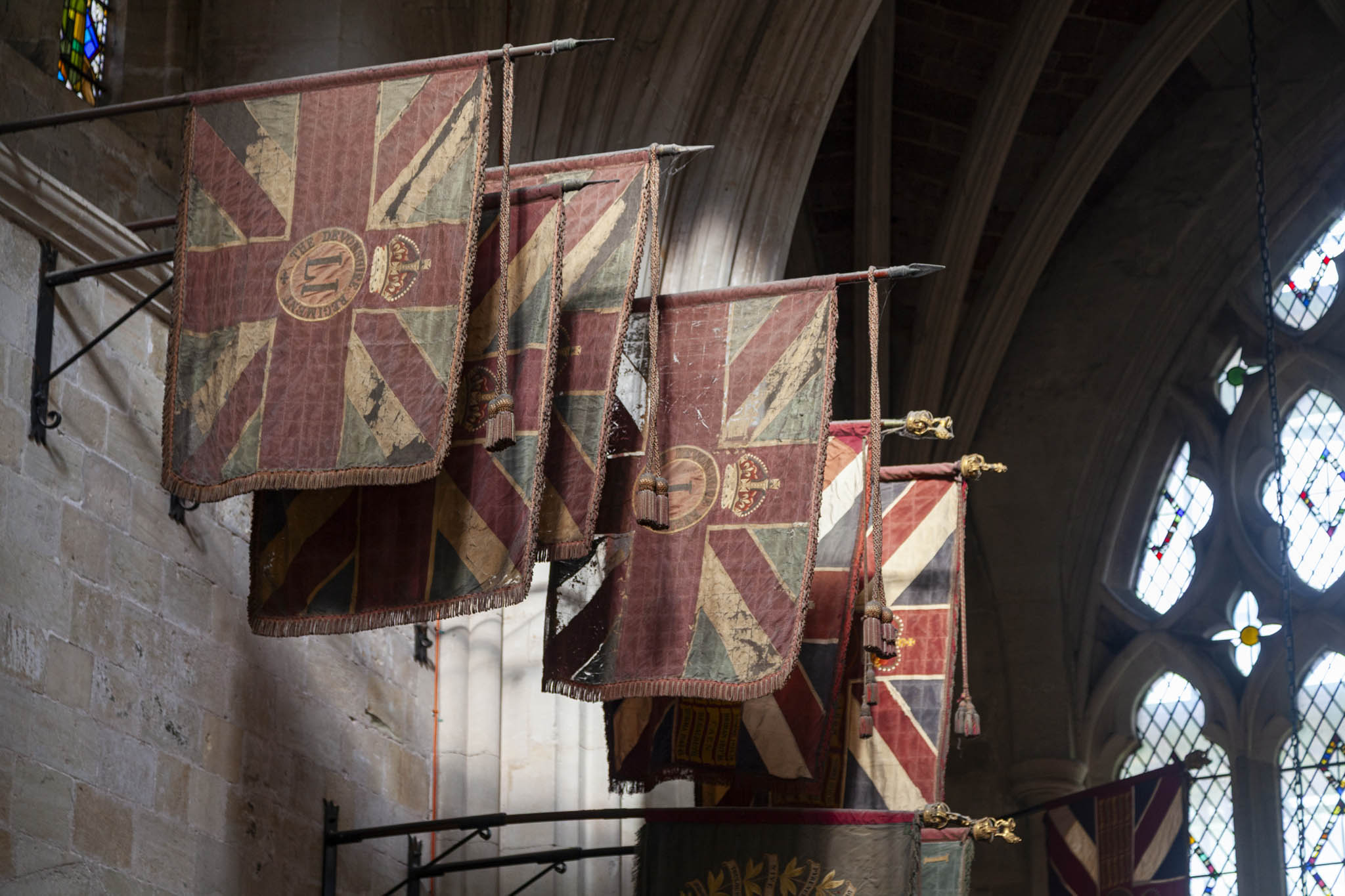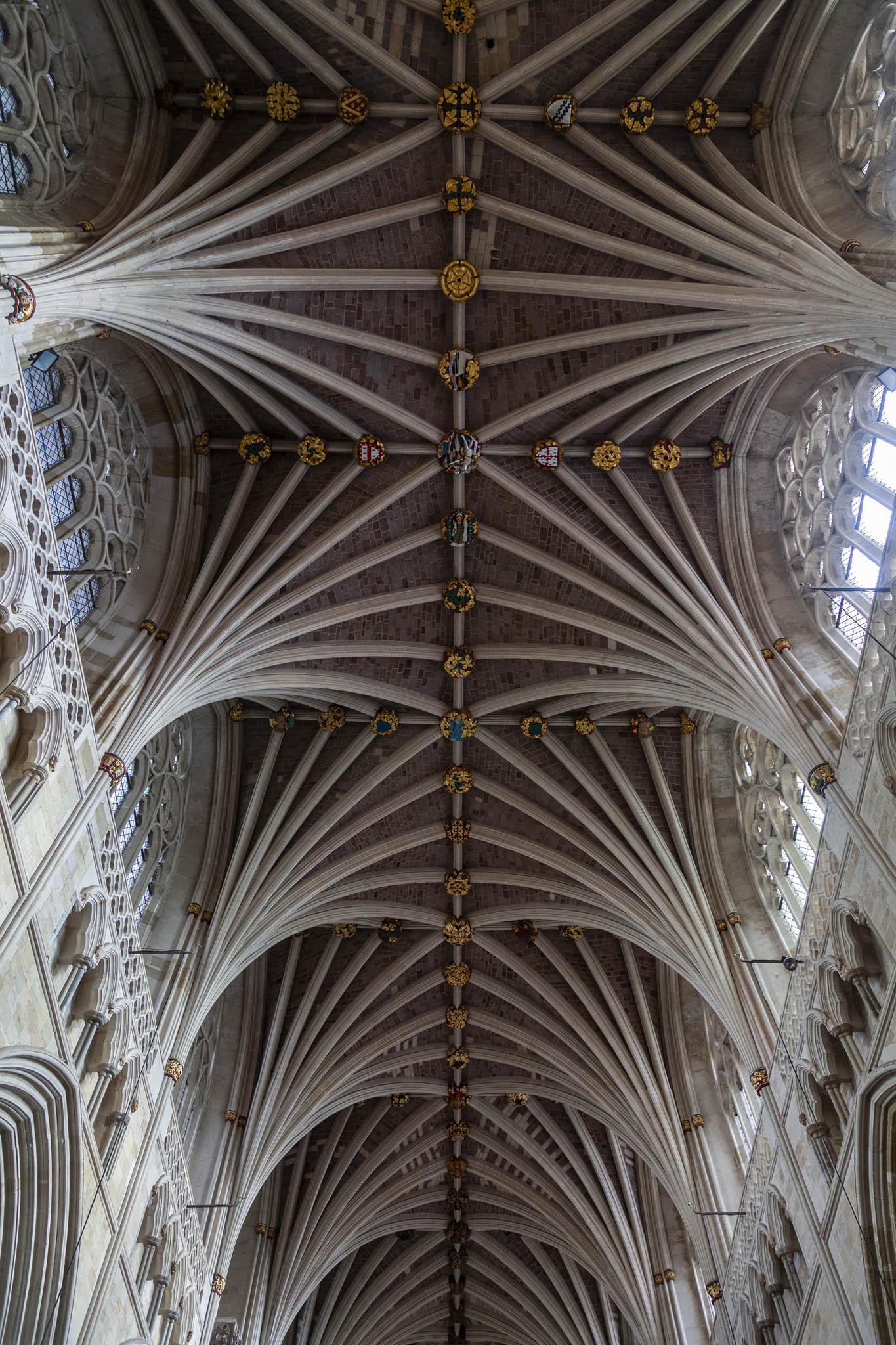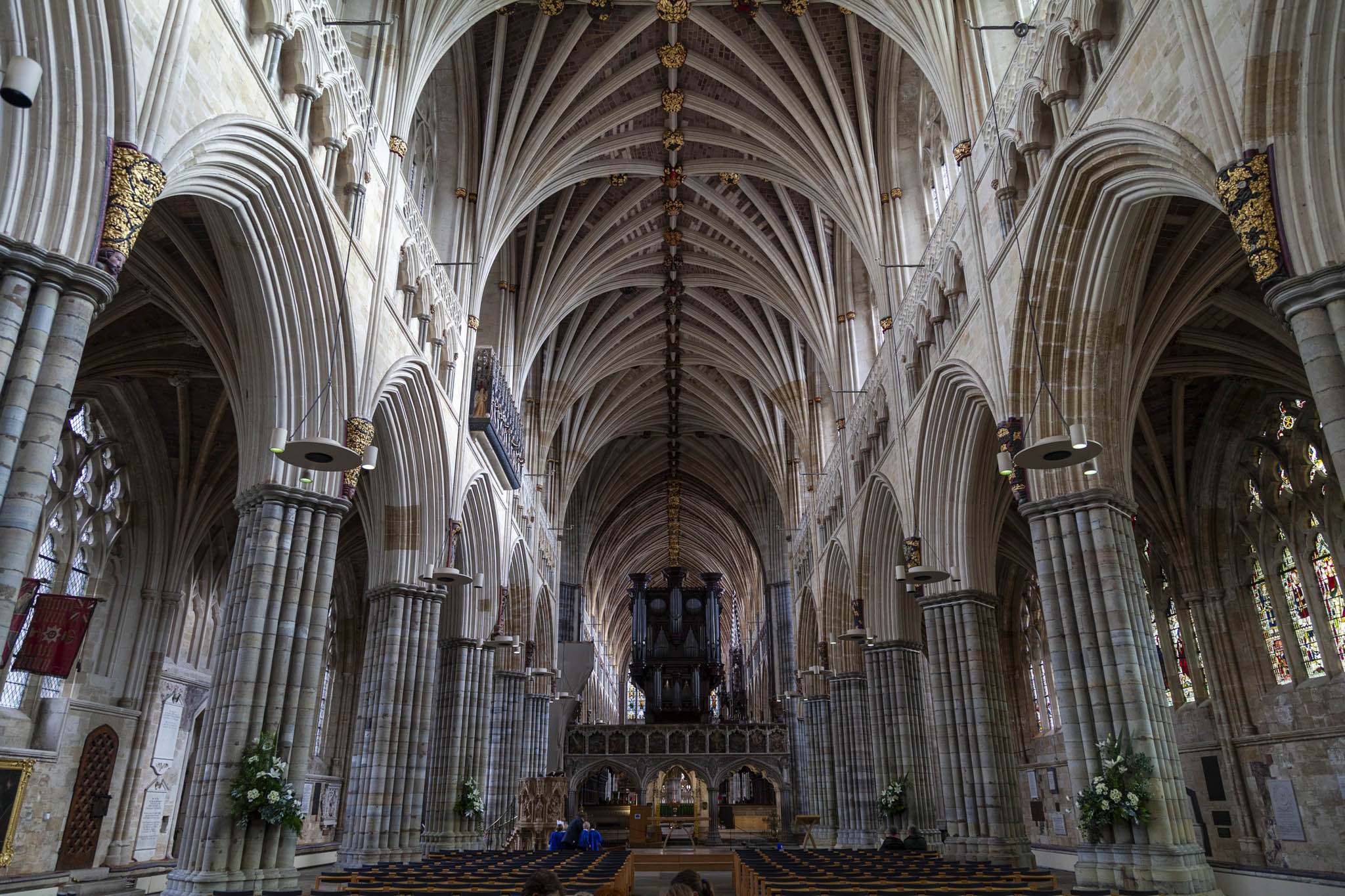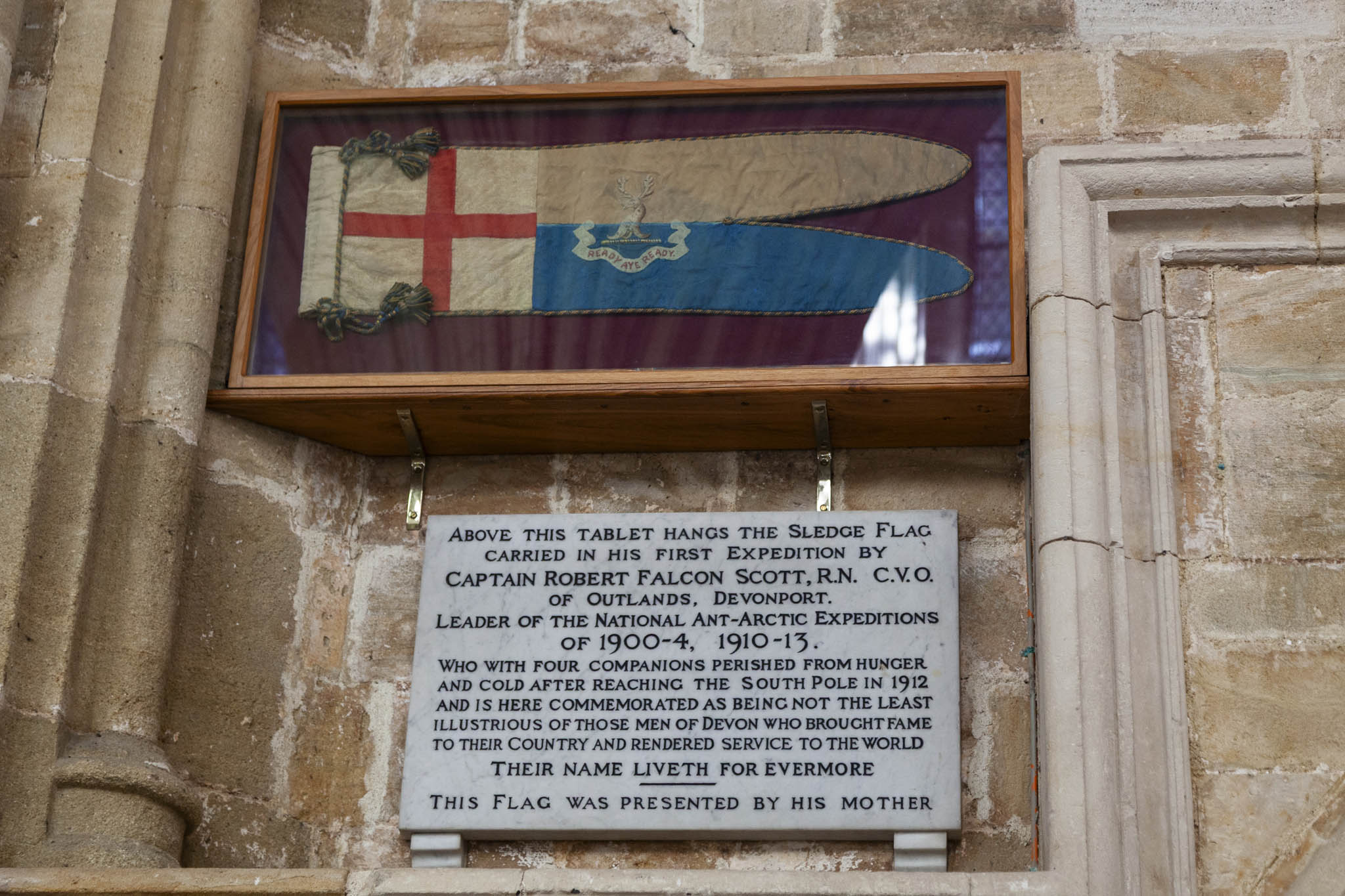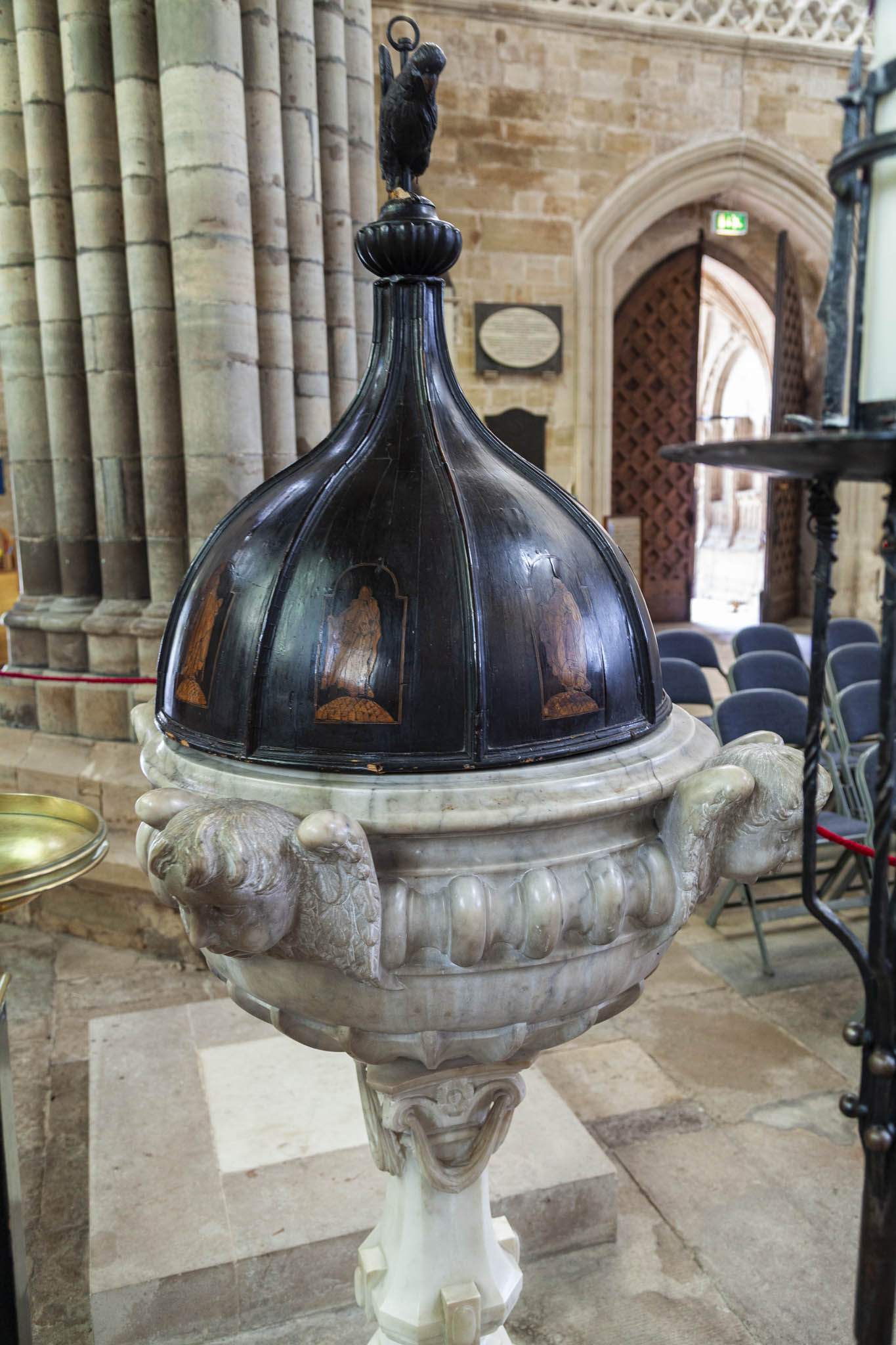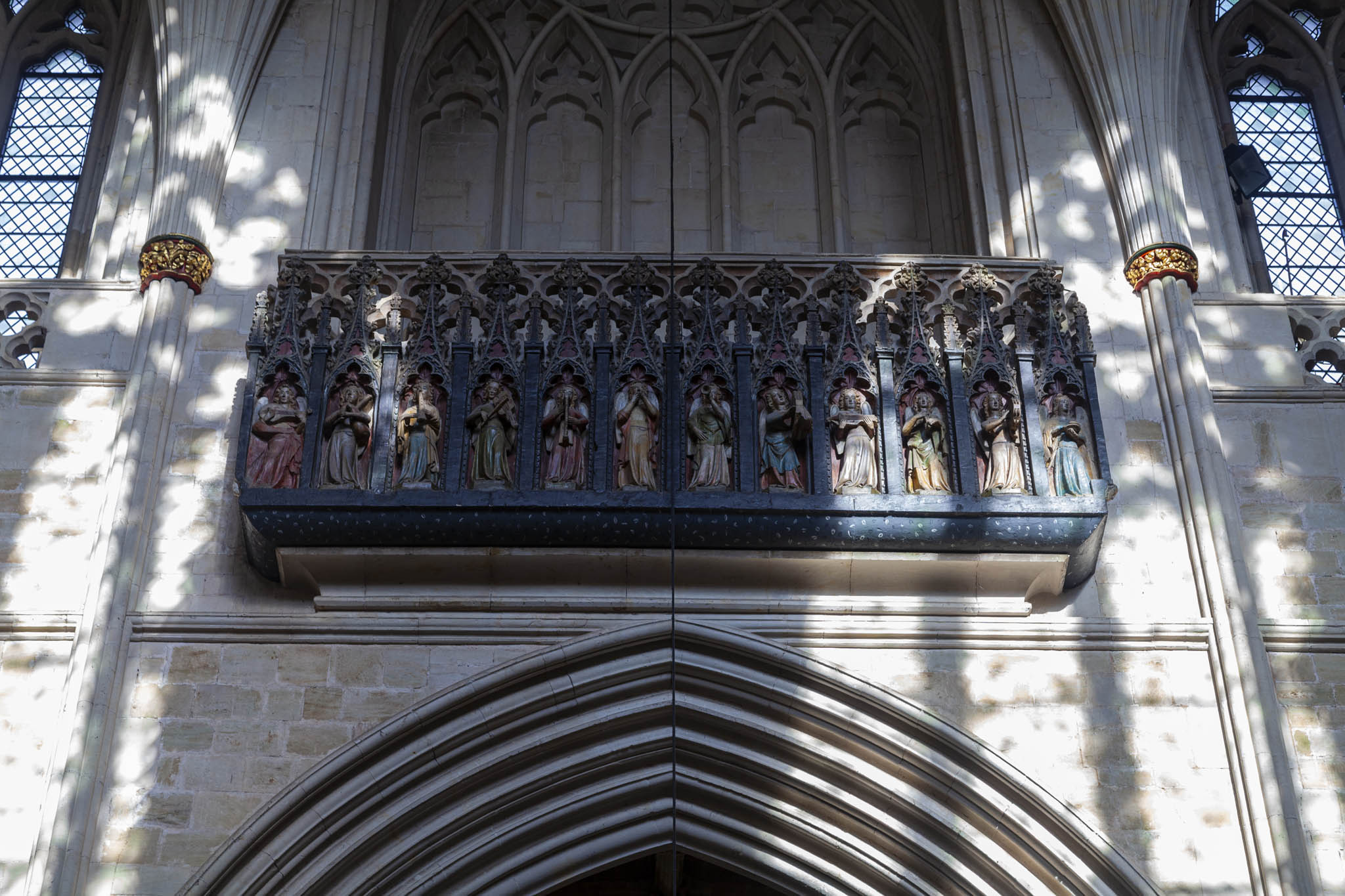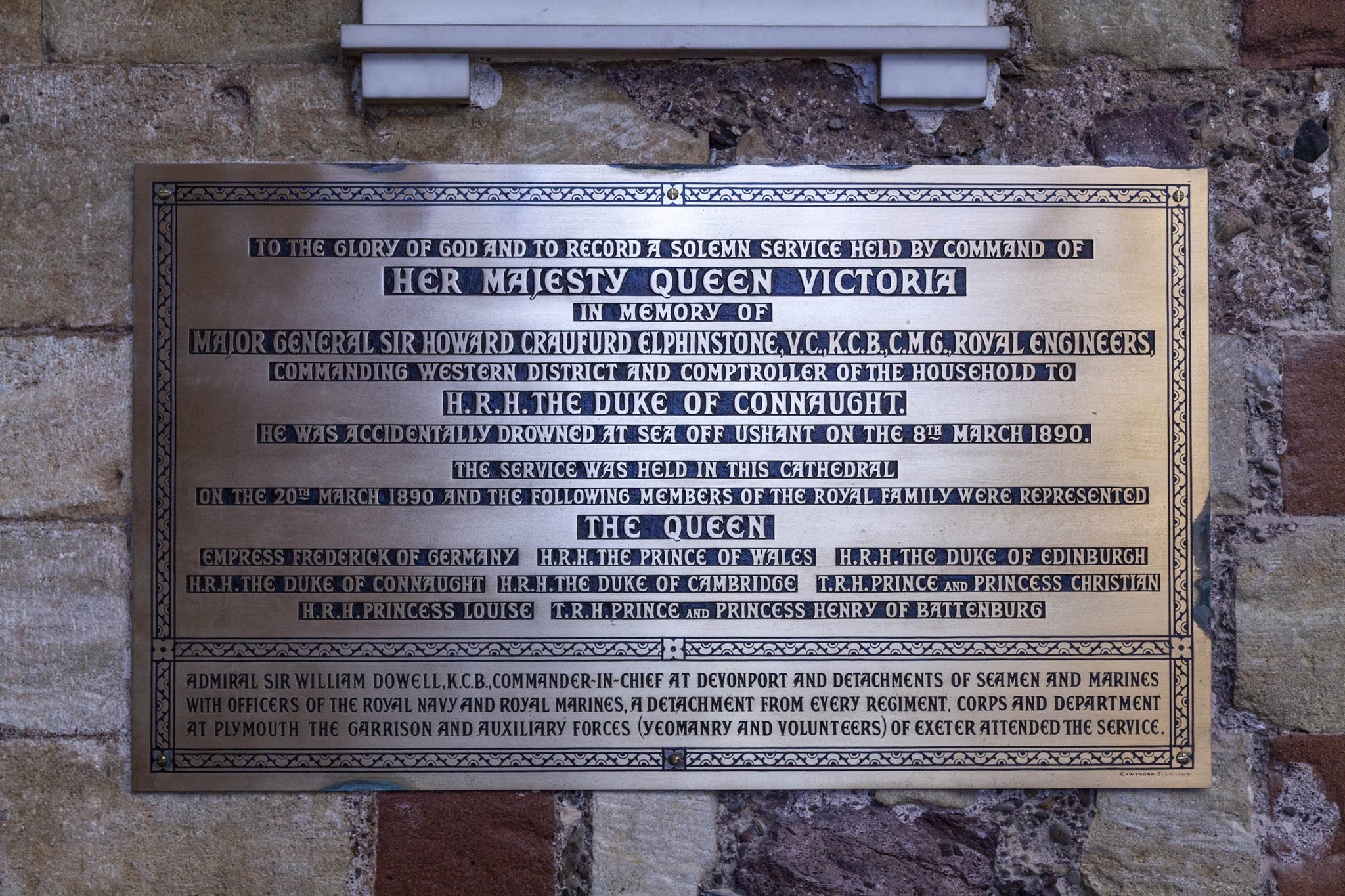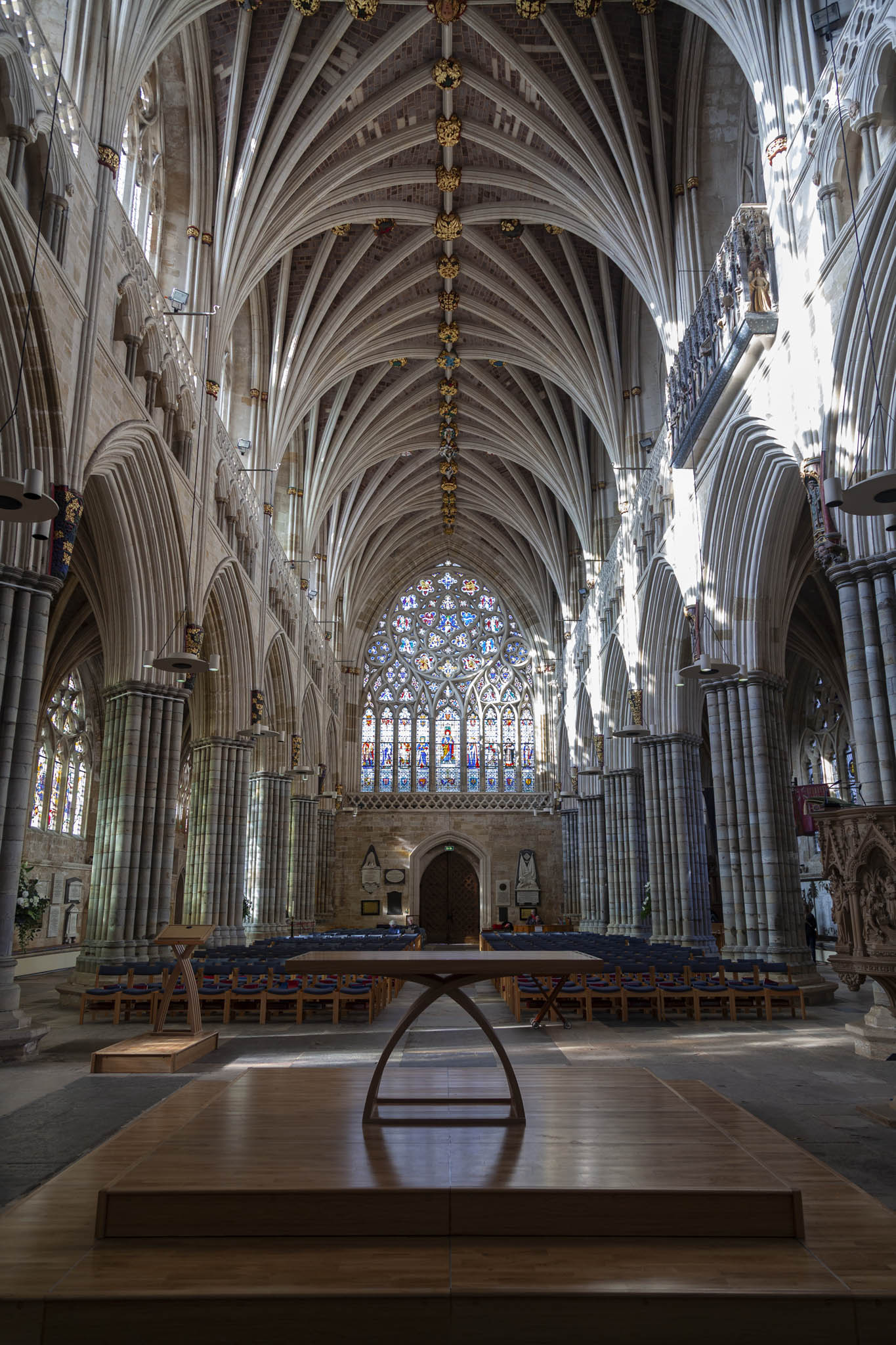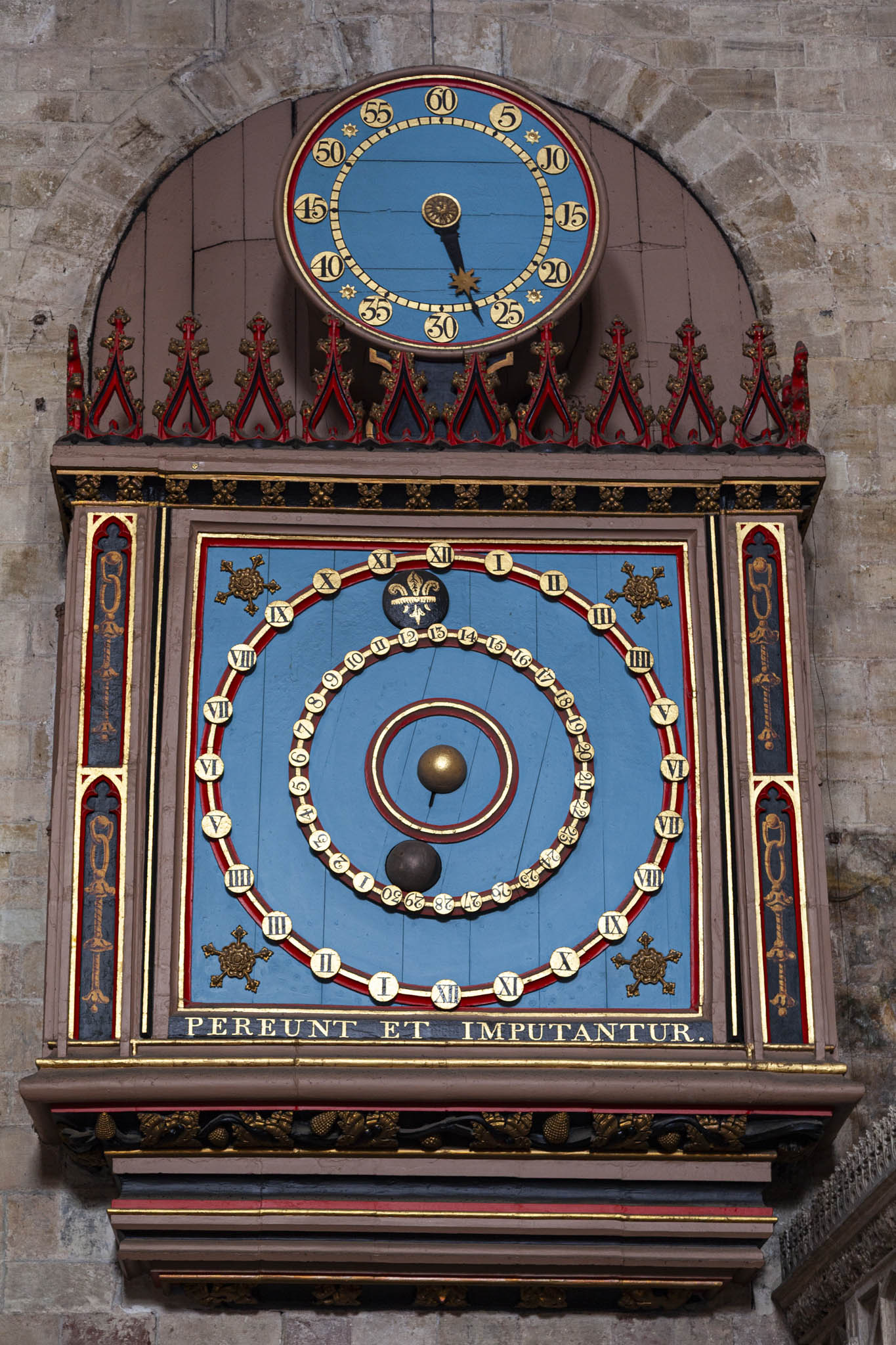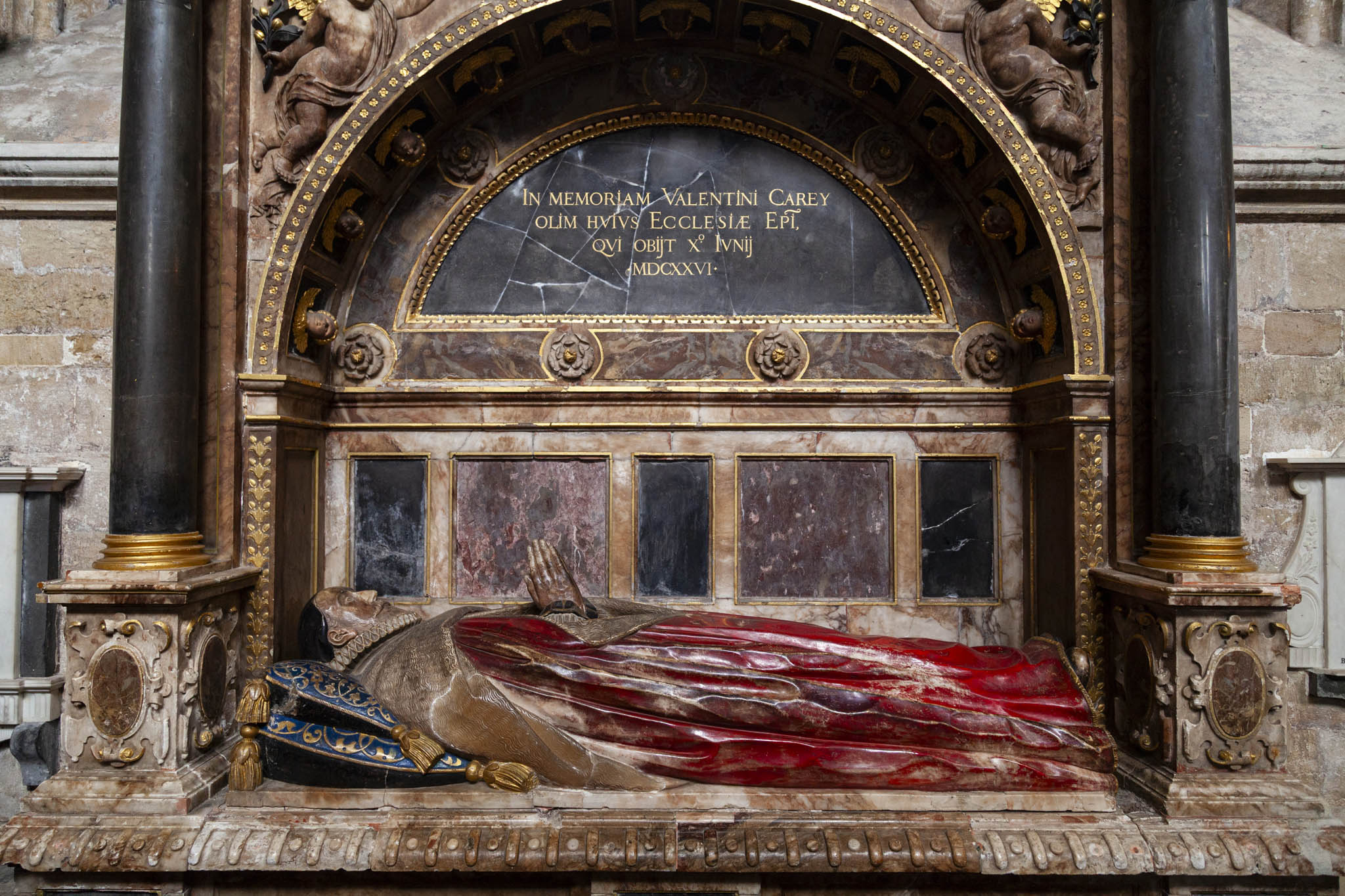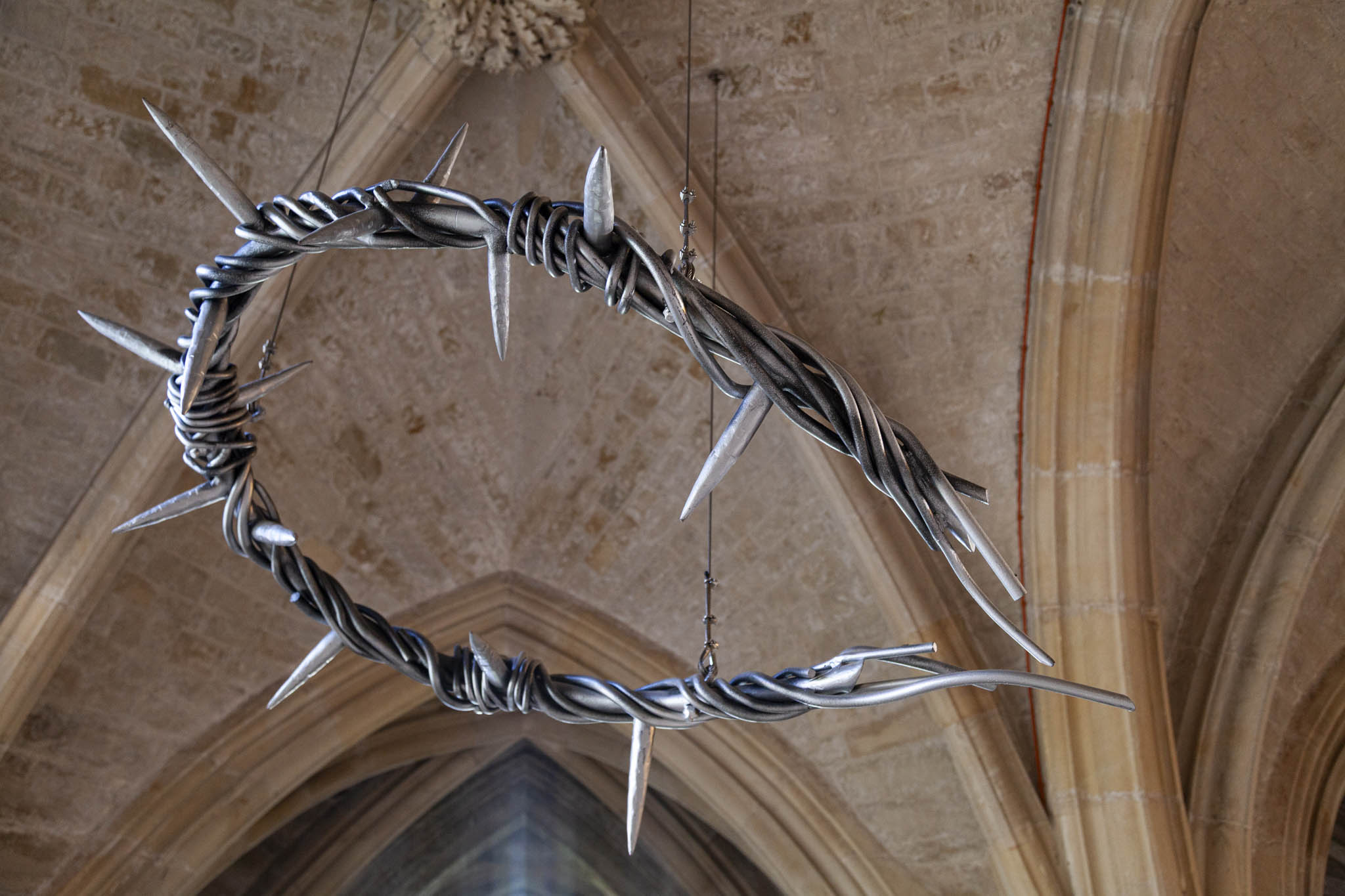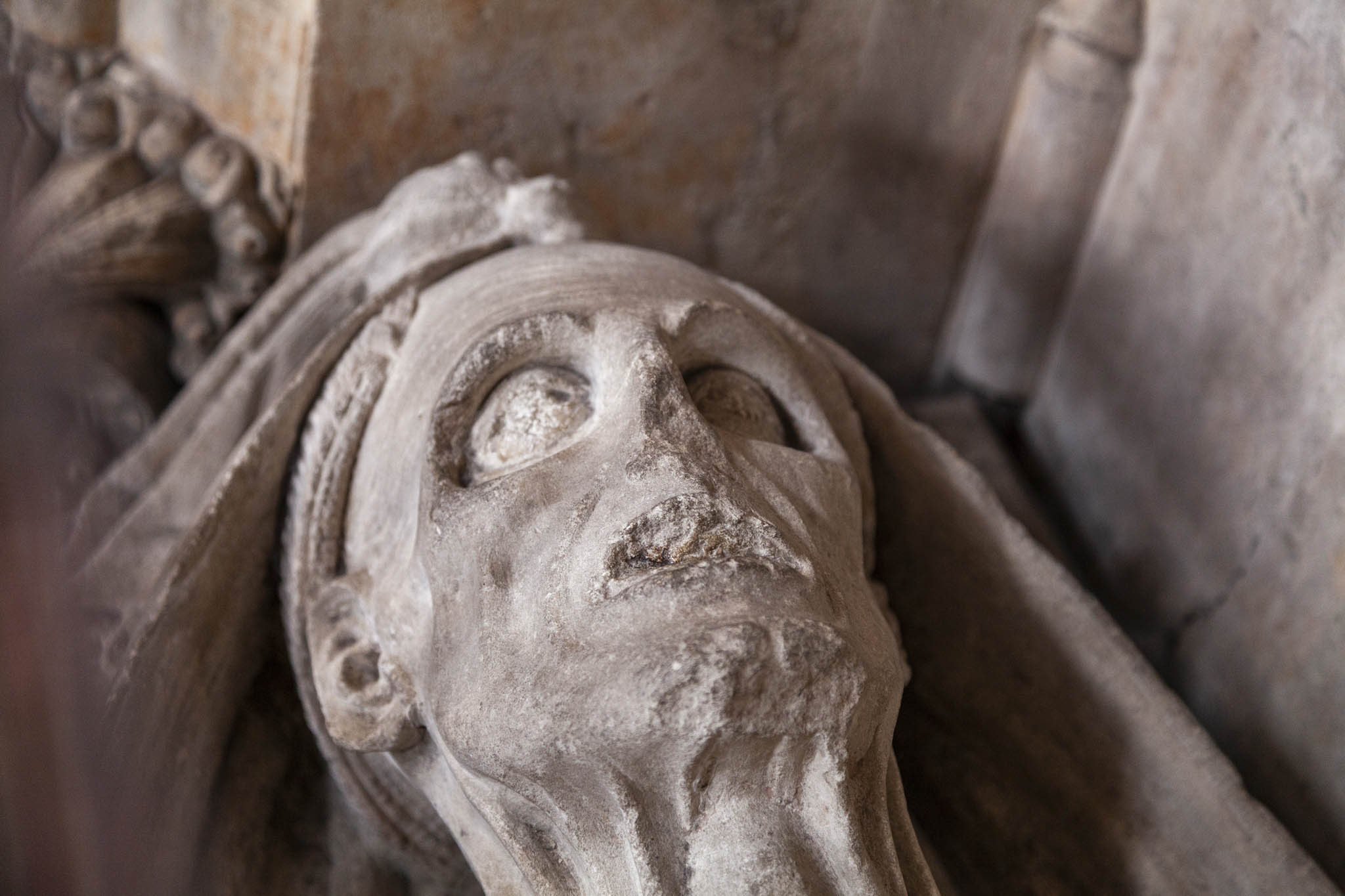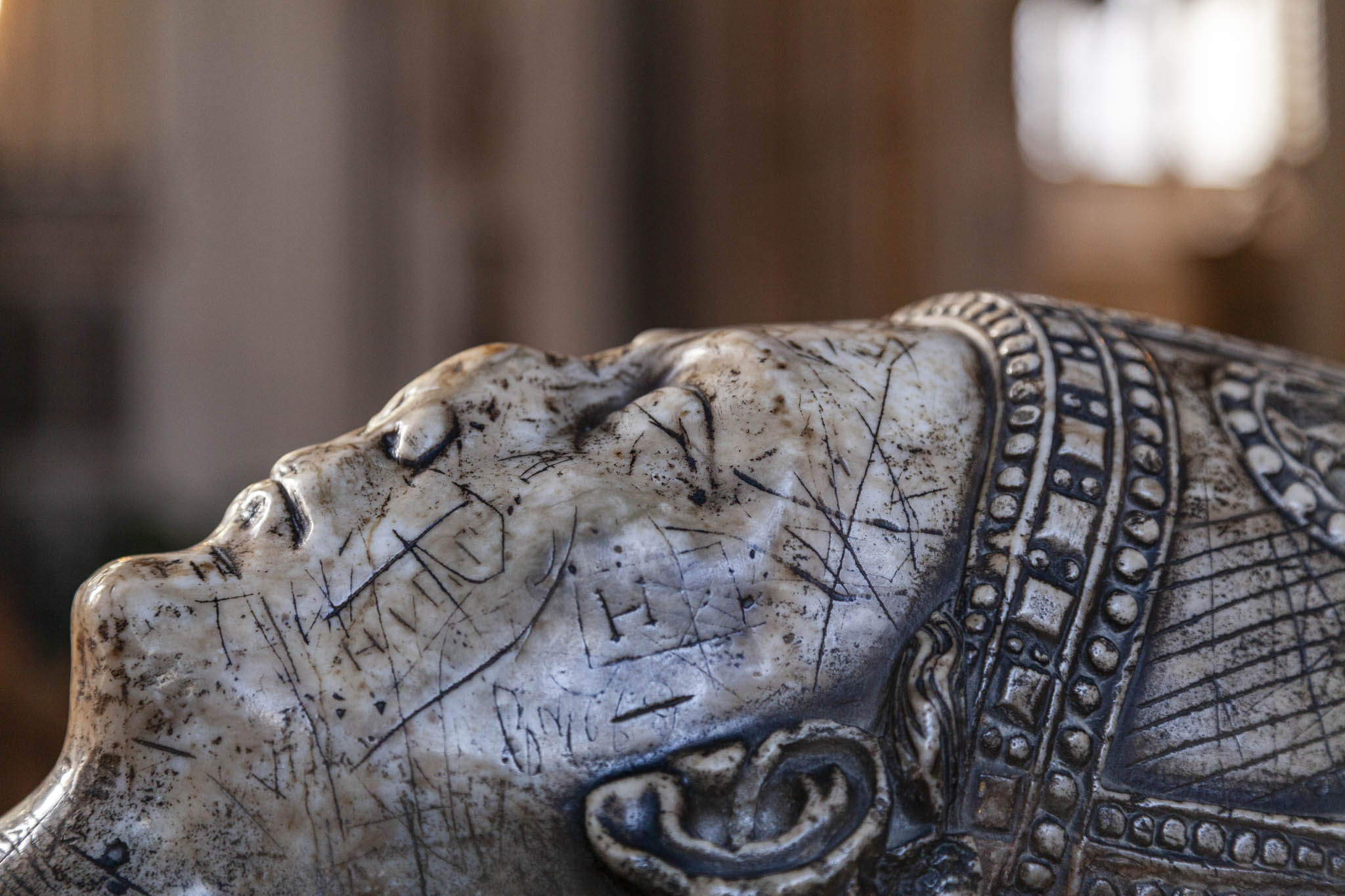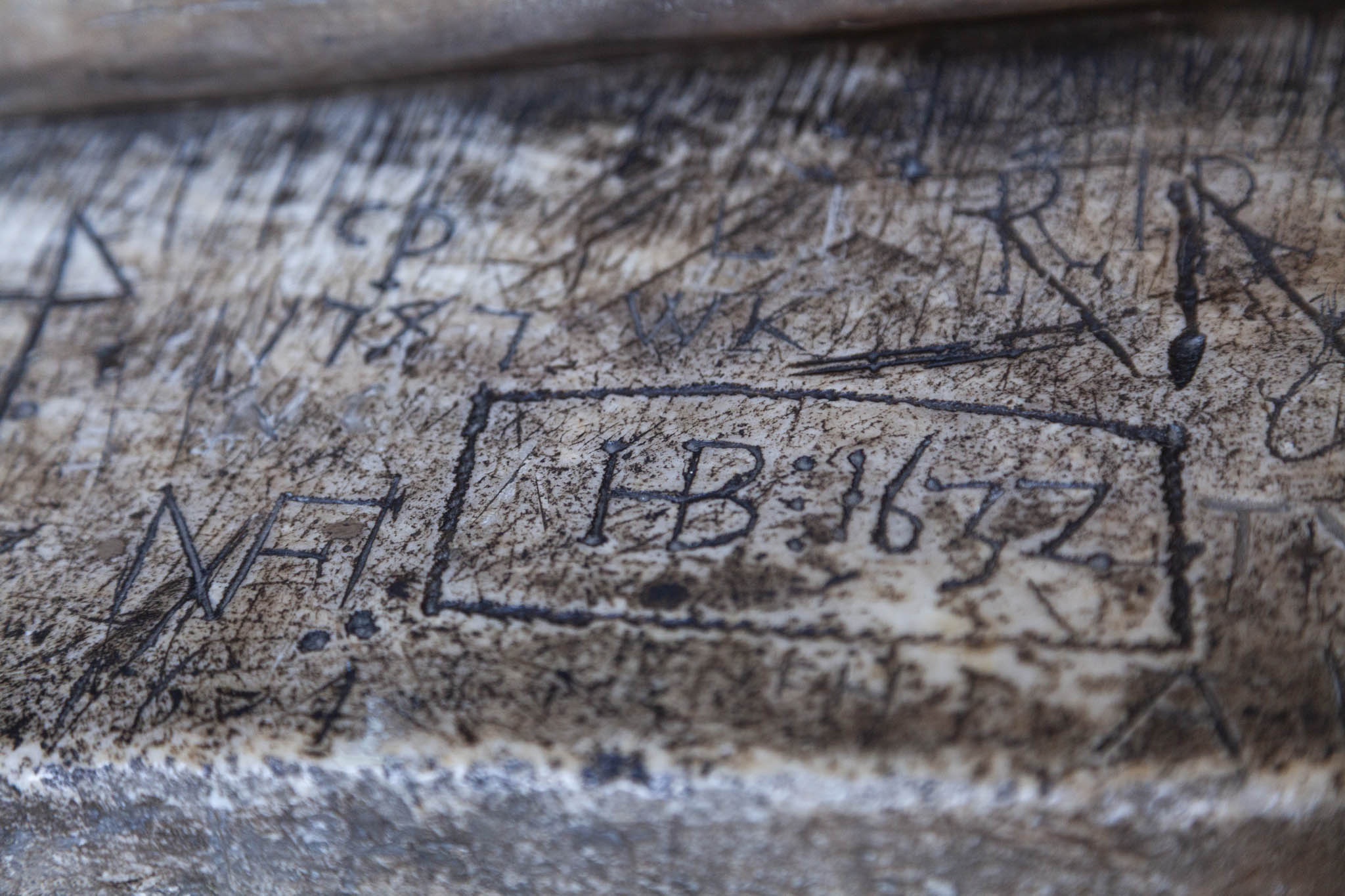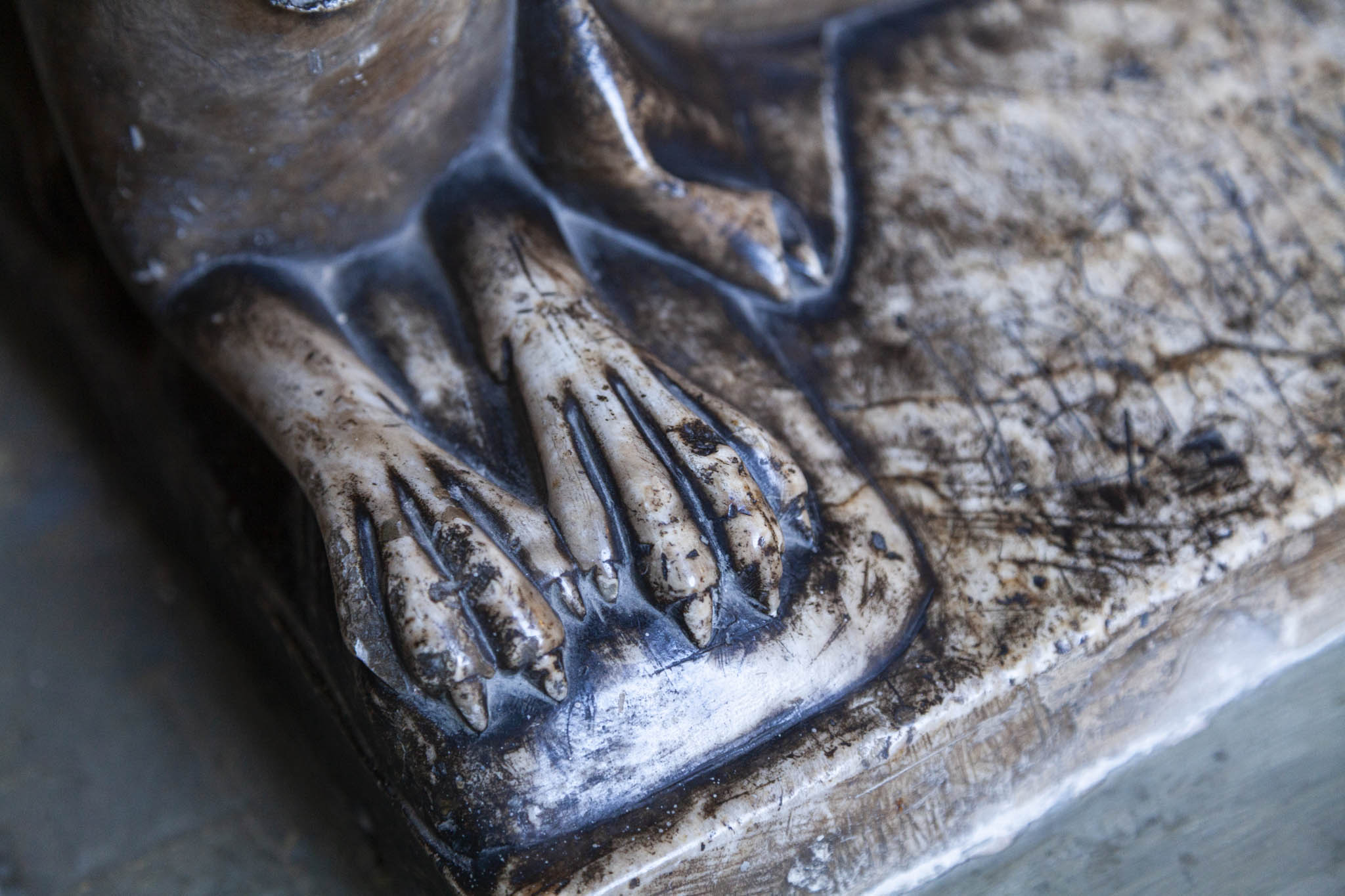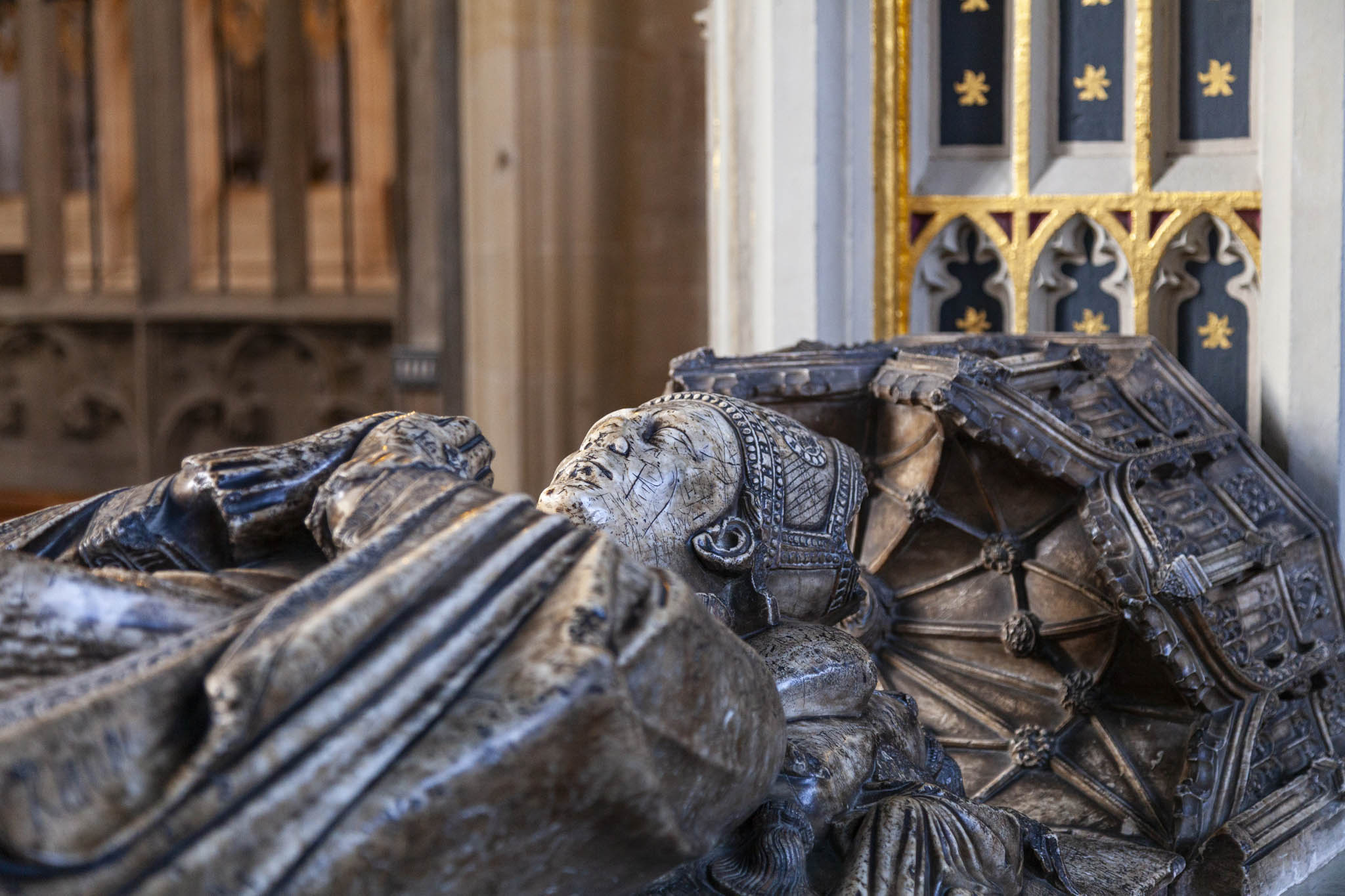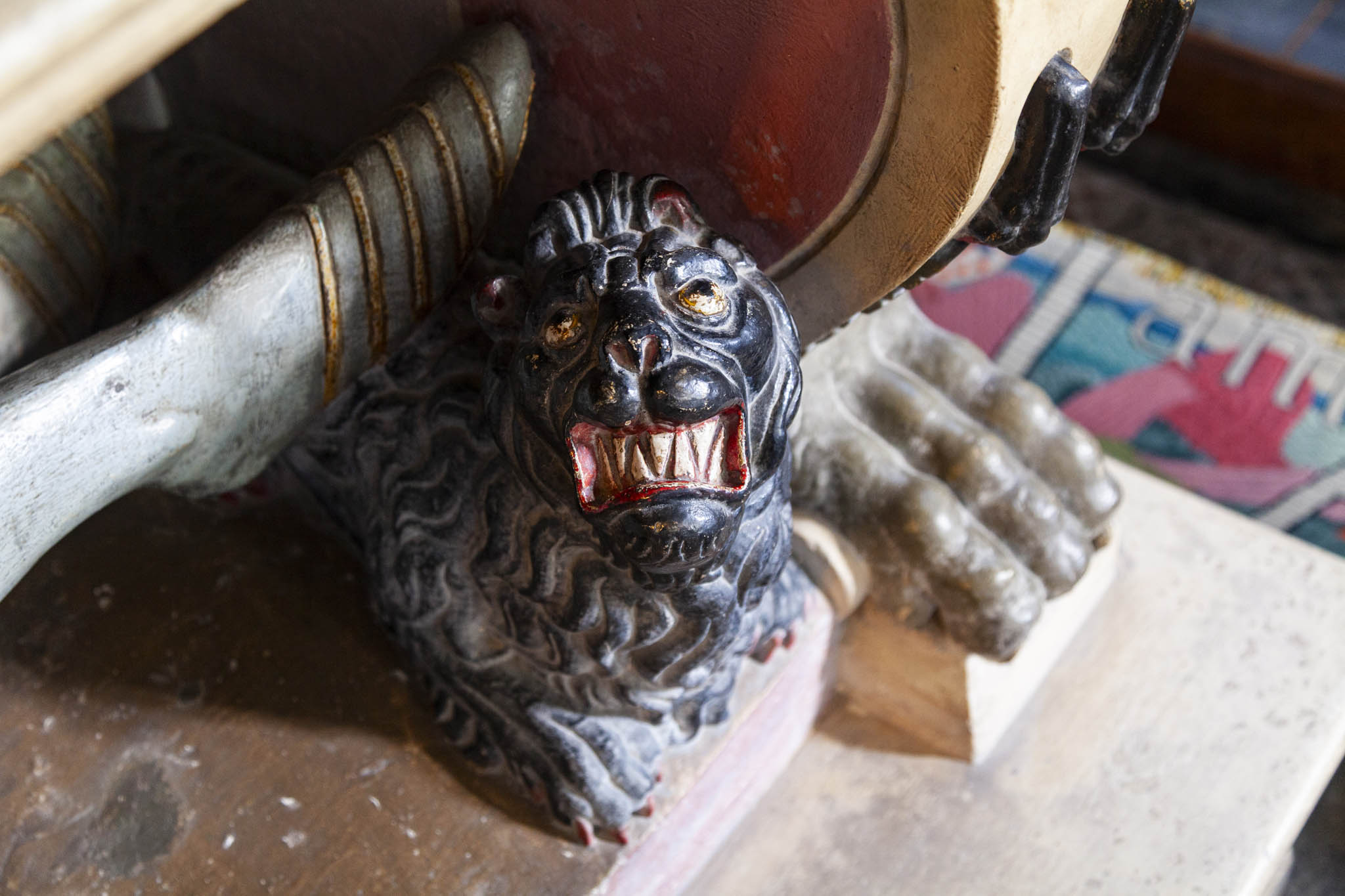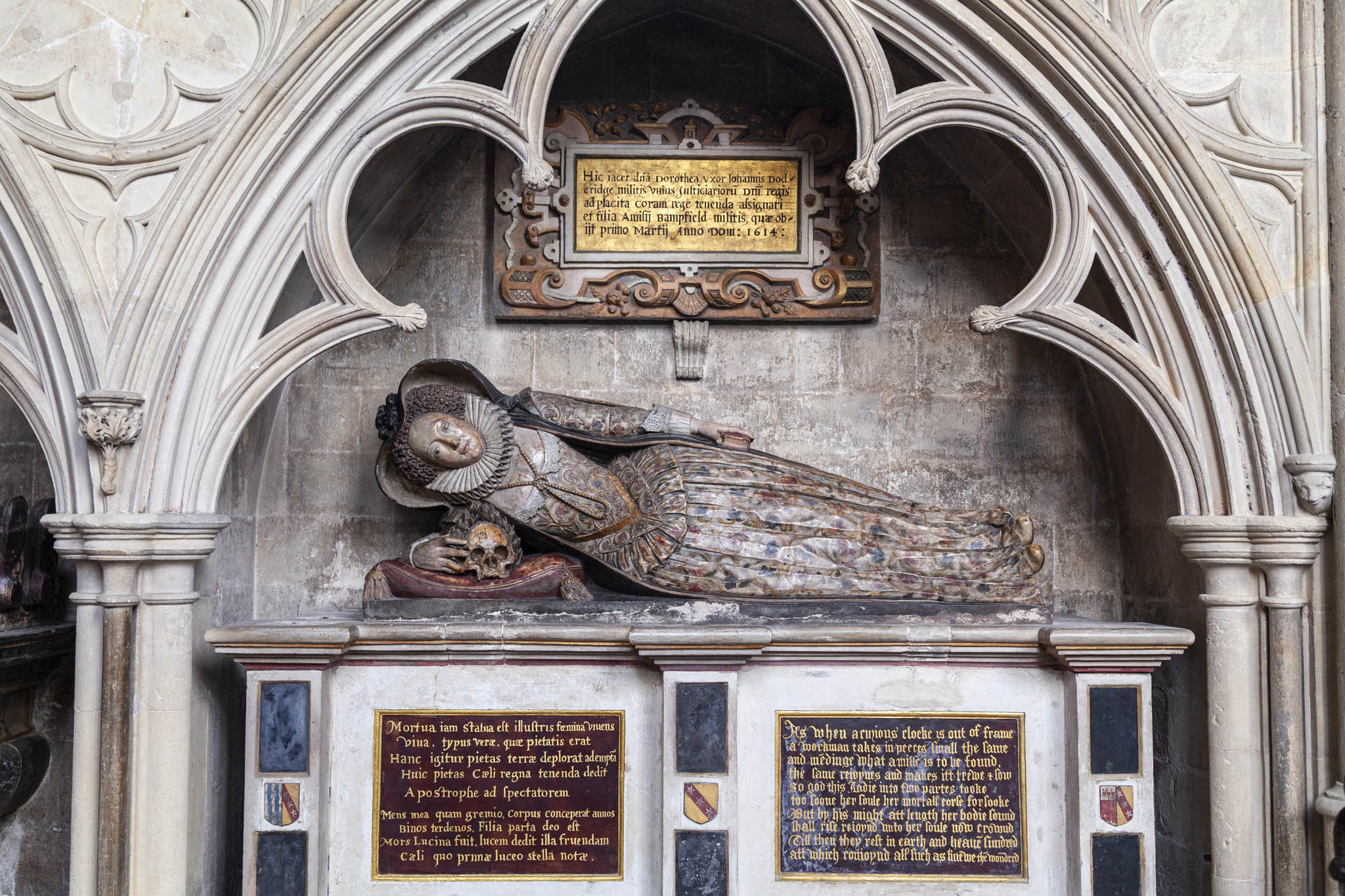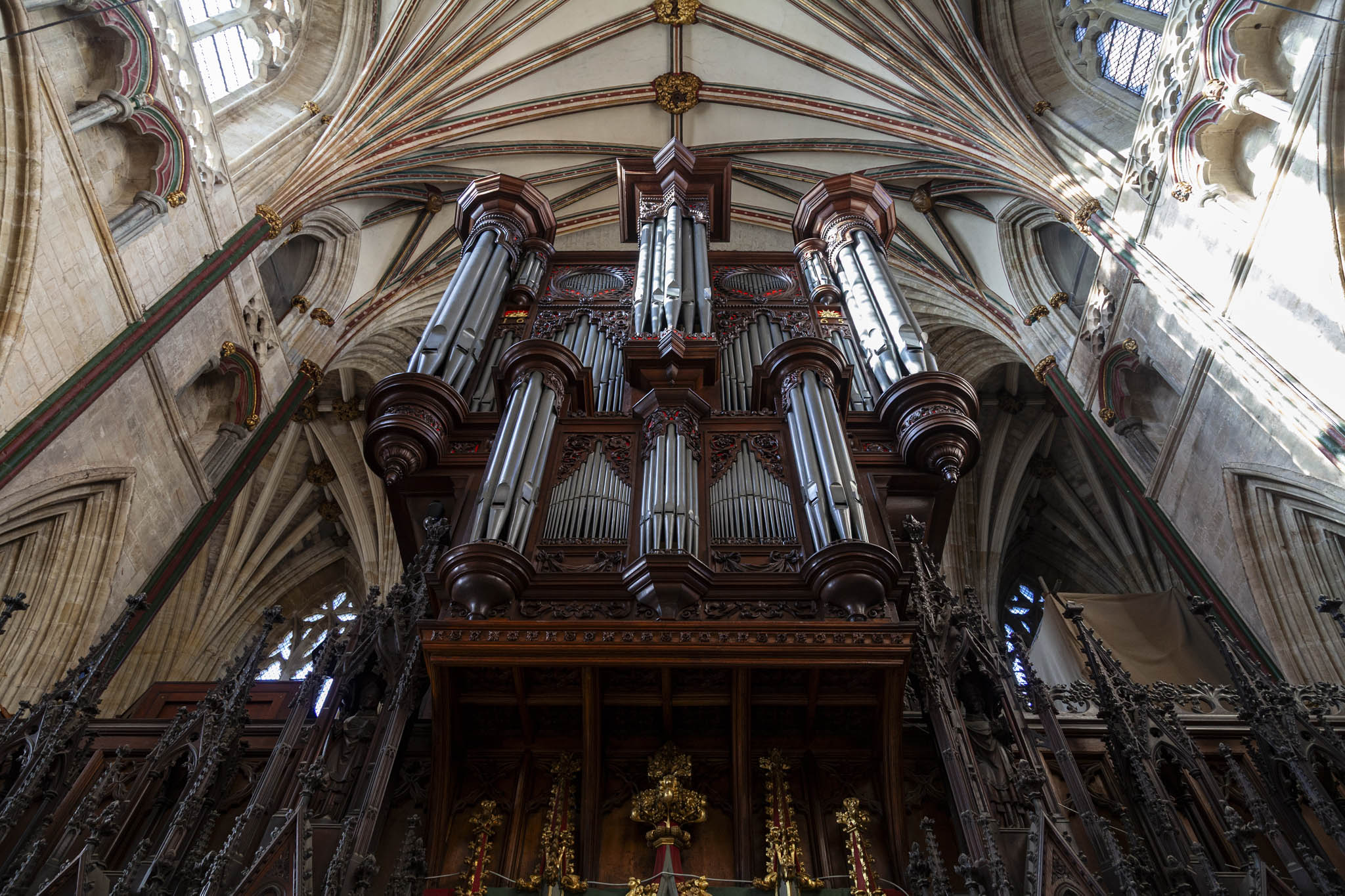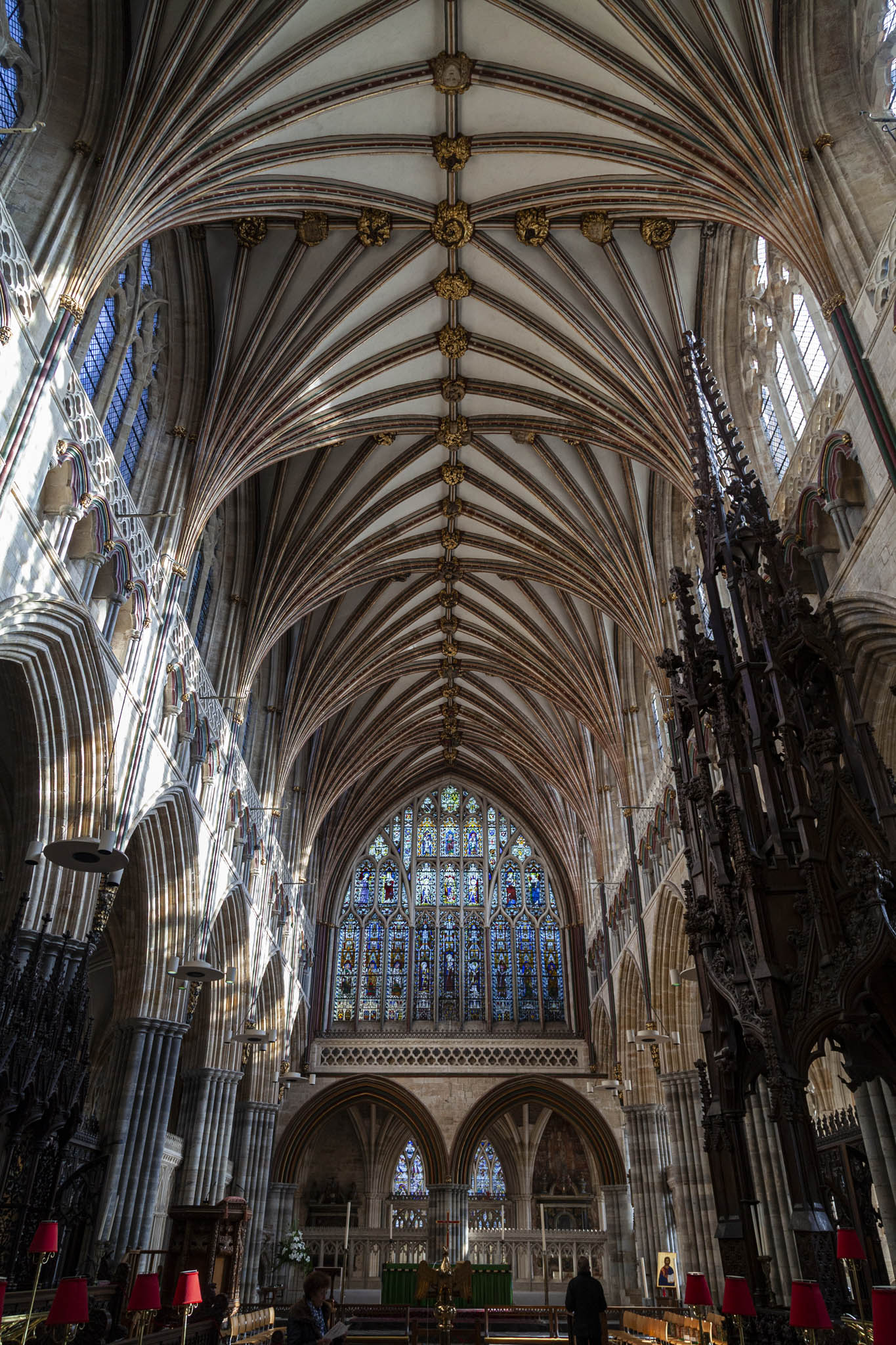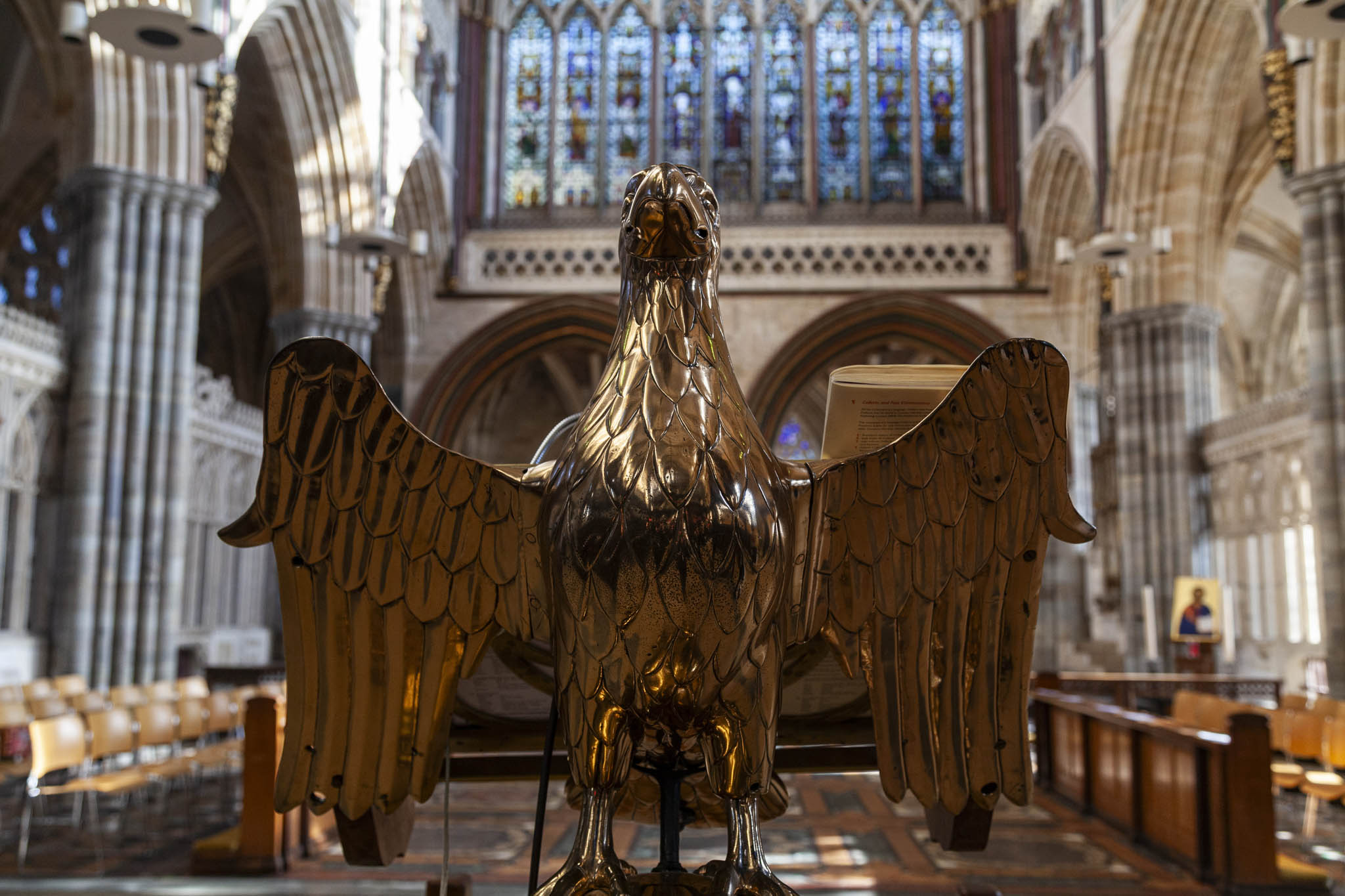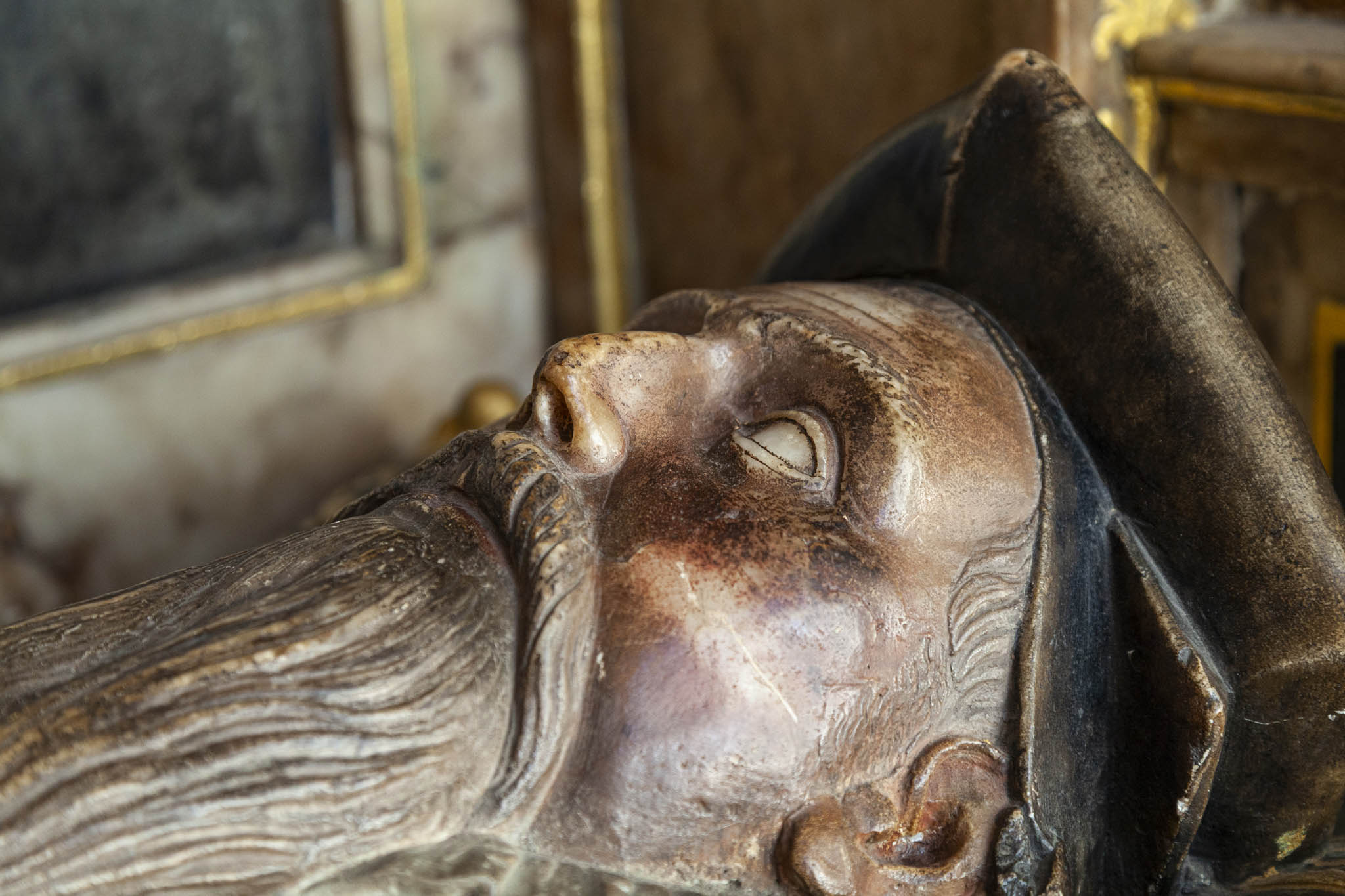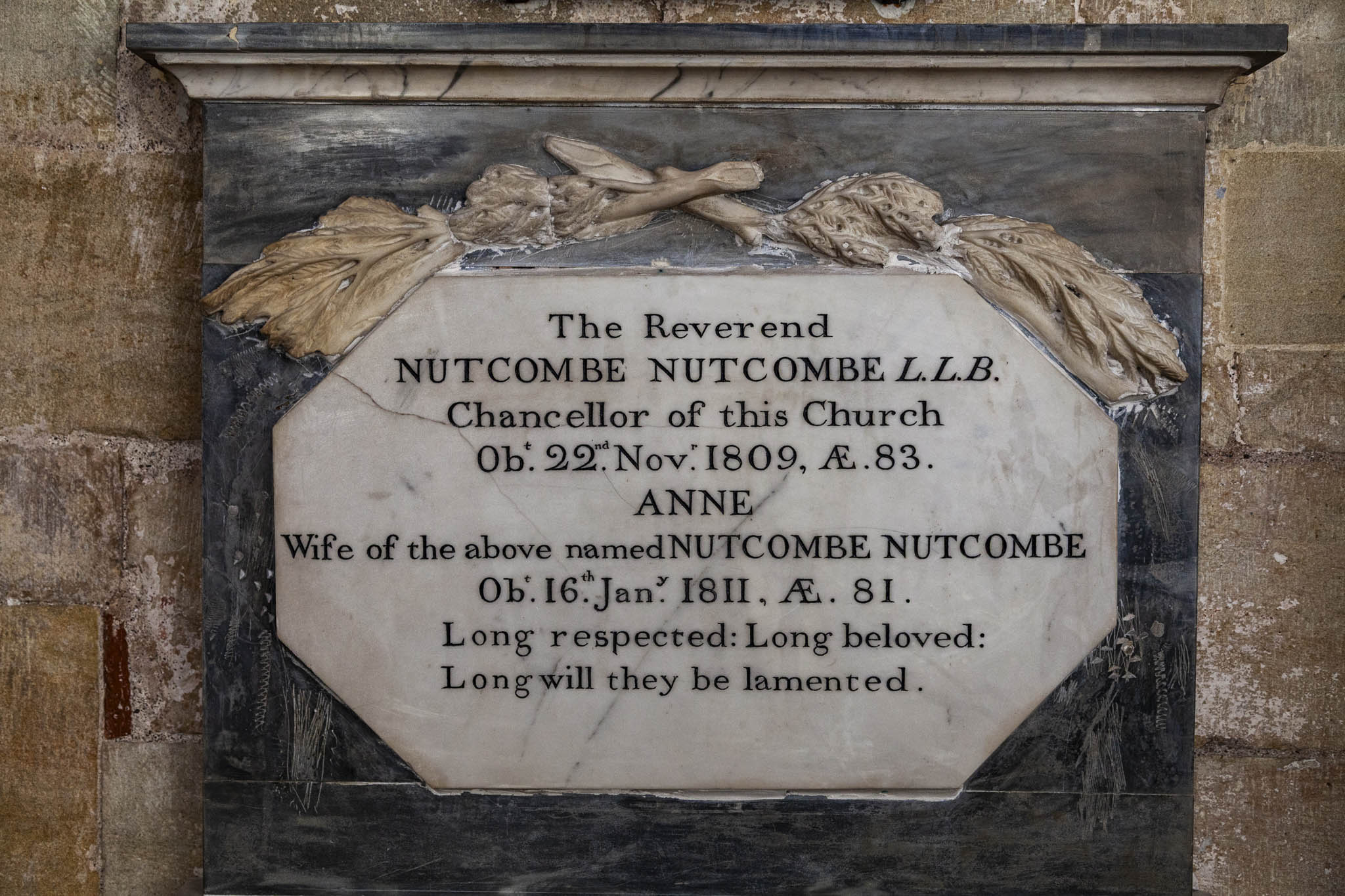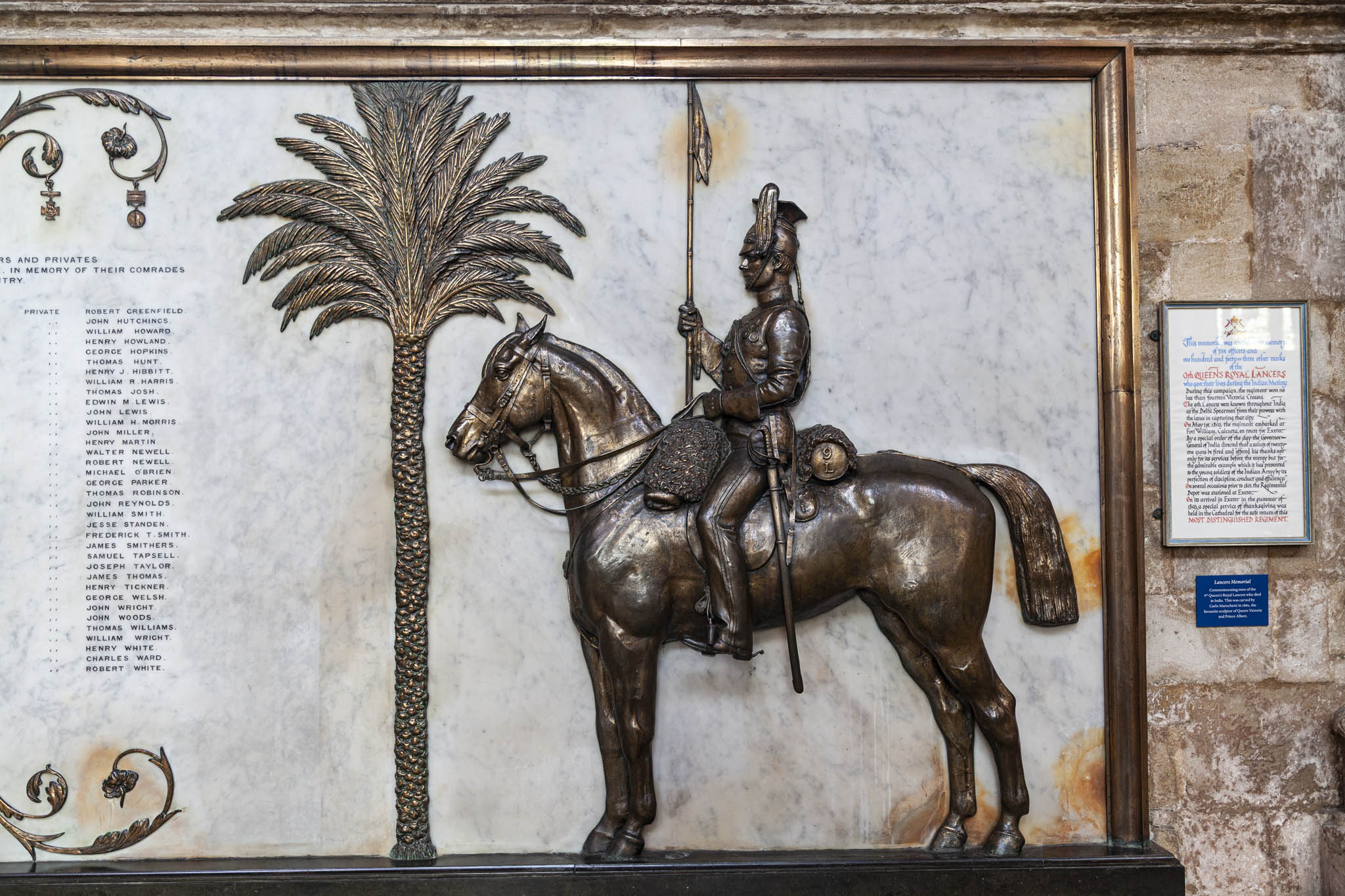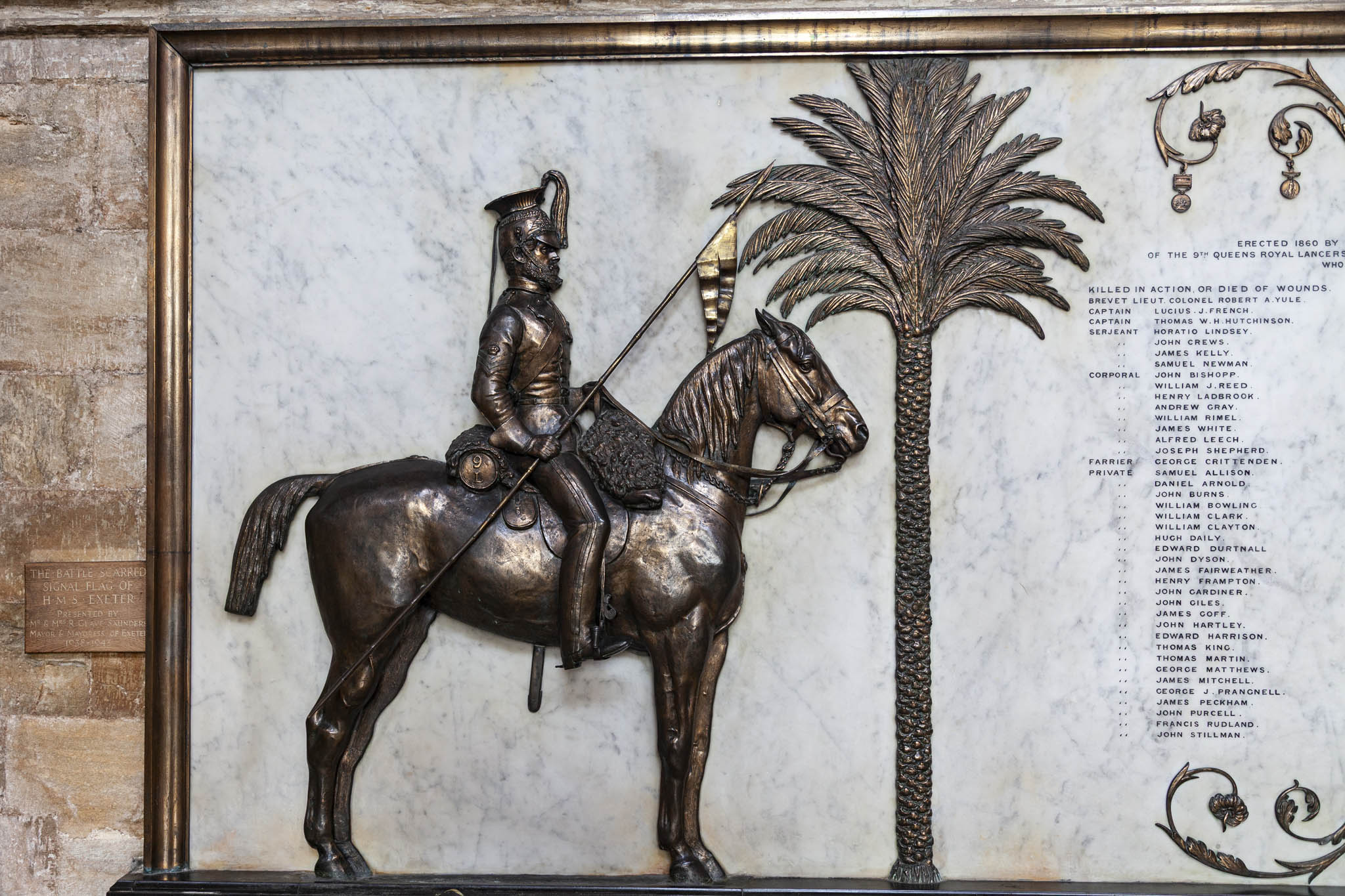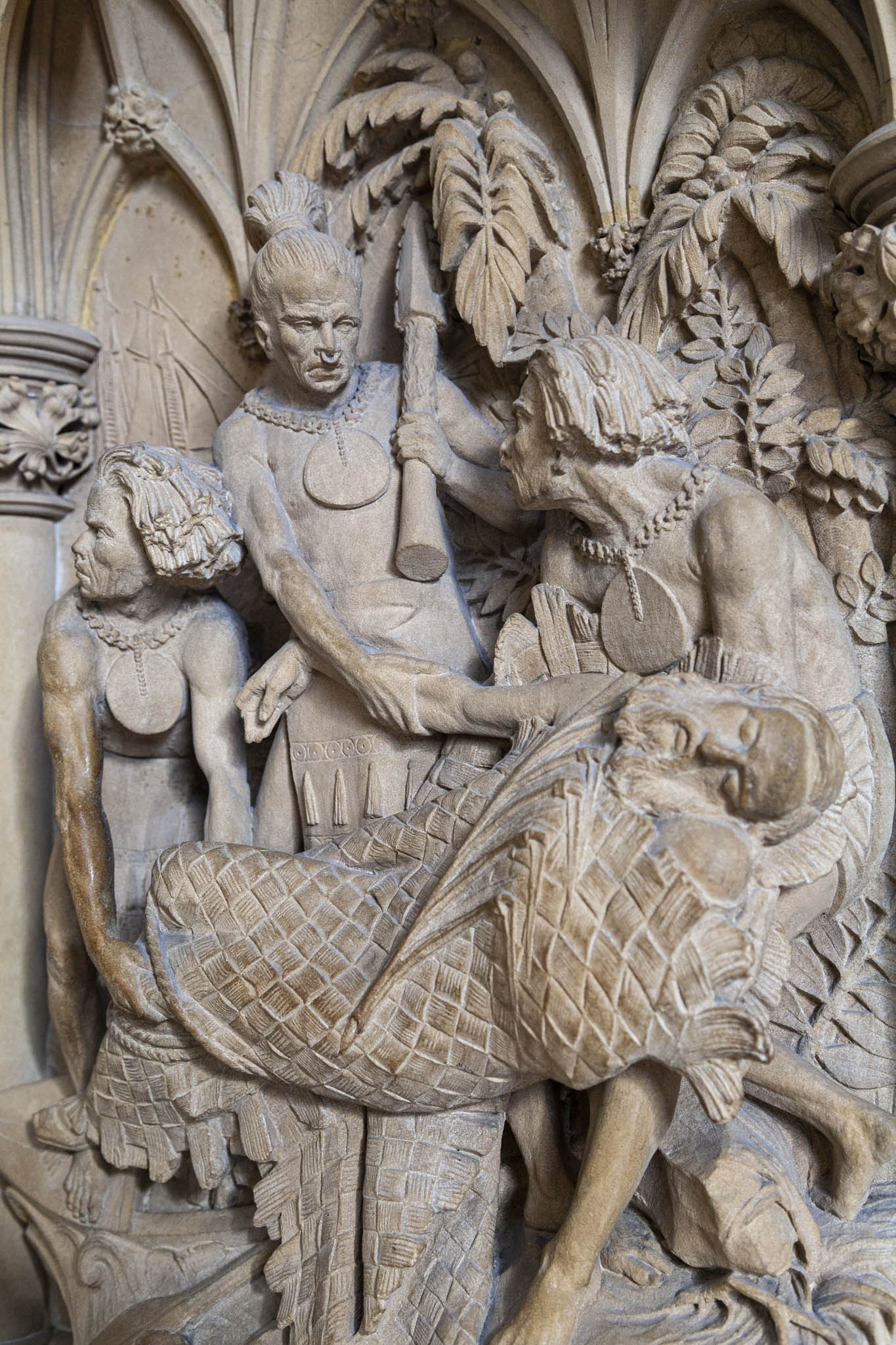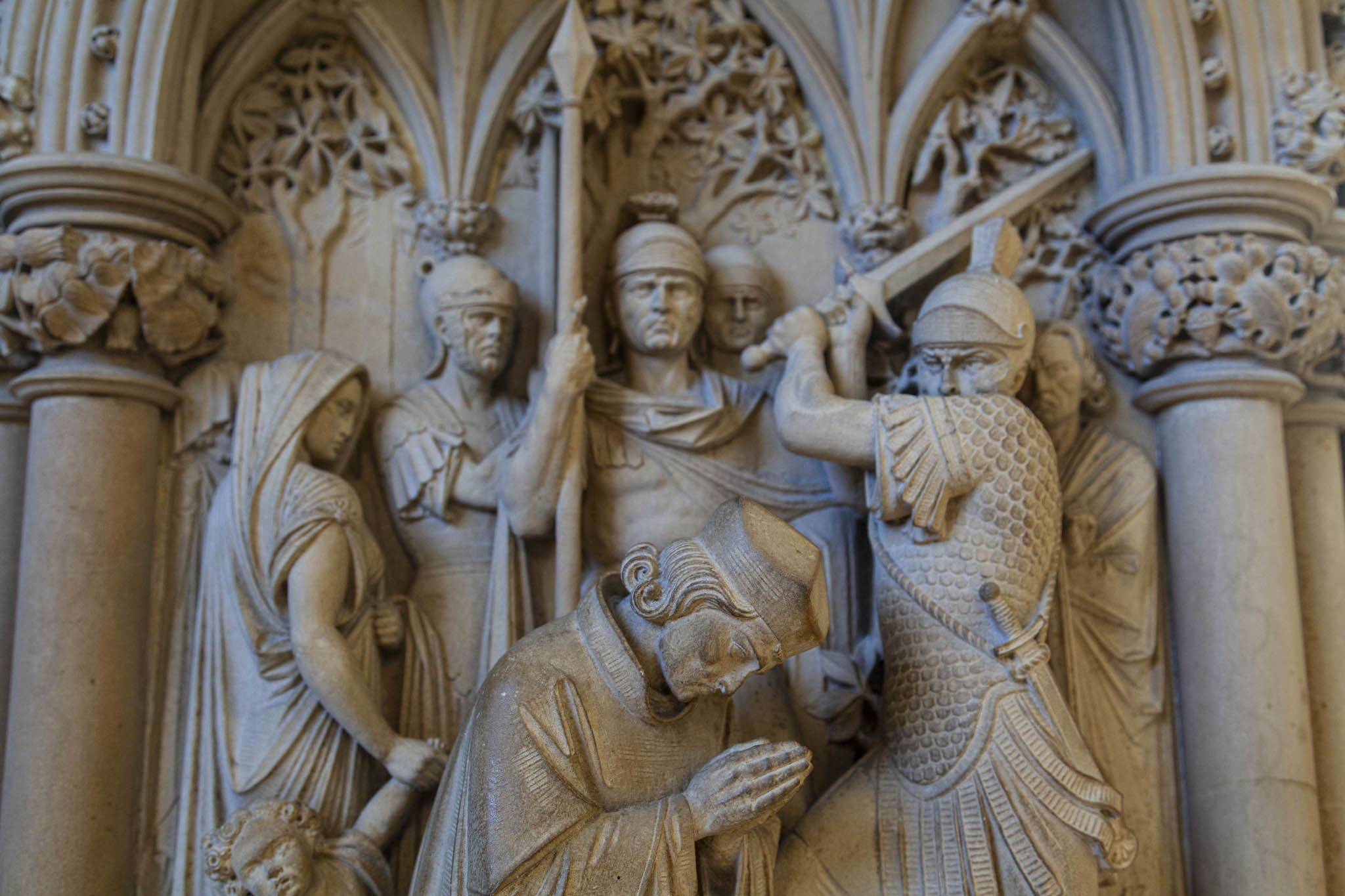We will very often visit churches when we’re travelling despite neither of us being religious in the slightest. Architecture and history are things we enjoy a lot and you can almost always guarantee something unique in every church you enter. Exeter Cathedral proved to be a very interesting cathedral indeed when we took a look inside during our 2014 South West coast break.
The cathedral was built over a long span of time and it was possible to see the transitional changes from Norman architecture (the square towers, for example) to Gothic (those windows and arches) both from outside and inside. Its foundations lay over what had previously been a Roman fortification.
For us it would be the many statues and reliefs in Exeter Cathedral that stood out as there were a great many that seemed to incorporate quite odd and often amusing depictions. Take the two exterior pieces below, for instance, that I’ve decided to name Knight Interrupted On The Toilet and Jimmy Hill, Chinny Reckon.
As I write this article (over a decade after the visit to this part of Devon, because I don’t like to rush things) it’s interesting to see the flags mounted on staffs in the photo below and consider the swathe of English flags that have been erected on lamp posts all across the country right now. There’s such a distinction between solemn honouring, respect, and pride in a place of worship, and banal and rampant racism that we see now. Some of the current crop of flagshaggers will say it’s patriotic but they’re only persuading similarly mentally-defective incels like themselves with this laughably imbecilic narrative, and the erections they get when their mindless vandalism and successful attempts to turn cities into tatty, messy eyesores gets press coverage are only discernible under microscopes.
Exeter Cathedral has a stone, vaulted ceiling, and not only is it a gorgeous example of one it’s also the longest, uninterrupted, medieval, stone, vaulted ceiling in the world.
Often when we visit churches on our travels we’ll gloss over a lot of the items mounted on walls, on plaques, etc. simply because they might be religious but they’re all much of a muchness and with very little variation in their respective histories. Exeter Cathedral stood out for grabbing our attention far more. Below you can see a sledge flag that the explorer Robert Falcon Scott took with him on one of his expeditions to the south pole. There’s also a giant version of one of those disappearing ball in a cup magic tricks (I’m guessing) which likely astounded medieval religious folk.
The Minstrels Gallery is a unique feature within English cathedrals with a front piece featuring twelve carved and painted angels playing musical instruments. Meanwhile, the representation of Queen Victoria and other members of the Royal Family to the funeral of Victoria Cross-recipient Howard Craufurd Elphinstone is worthy of a plaque to commemorate the occasion. Elphinstone had come out of the Crimean War not only with that cross but also honours from the French and Ottoman empires and had subsequently been appointed governor to princes Arthur and Leopold in the Royal Household.
Forget the upper minute hand section for the moment and look at this beautiful astronomical clock in Exeter Cathedral below, thought to date from the late fifteenth century. The outer circle marker indicates the hour of the day in a double-Roman numerals, 24-hour clock format while the inner circle shows the day of the month. The marker inside that is spherical and rotates to show the phase of the moon. The upper section with the minute hand was an eighteenth century addition and the original clock mechanism was replaced in the nineteenth century with further restorative works taking place in 1910.
Looks like someone doesn’t like the look of that crown of thorns suspended up there.
Scrawling graffiti on things seems to have always been with us and it was interesting to see how much there was on some sculpted works in the cathedral, as well as the dates.
The memorial below was an absolute delight, being that of Dorothy Dodderidge who died in 1614 (or 1617; there are reports of both, although the former date is definitely on the plaque above only my Latin isn’t good enough to translate it all). I love the pose, laying on one side, dressed in full Elizabethan finery, cradling a skull on a cushion. As you do.
The organ below shows it just after major renovation work in 2014. The first organ in Exeter Cathedral was built in 1665 but it has undergone a couple of considerable rebuilds since then.
Nutcombe Quicke was the original name of the reverend named below, the son of John and Rebecca Quicke, related to the well-connected and reasonably wealthy Nutcombe family in Devon, for whom he was named. At the age of 65, however, an inheritance came up for which he needed to change his surname if he wanted to receive it (like Brewster’s Millions, but sillier) so through a private act of Parliament this was undertaken and he and the rest of his family took on the Nutcombe surname too.
The Lancers Memorial was sculpted in 1860 by Carlo Marochetti, commemorating those of the 9th Queens Royal Lancers who died during the Indian Rebellion of 1857.
Finally, two more interesting pieces of relief work that I’ve decided to name Mermaid! Mermaid!? I’m A Merman! and Tim, Don’t Move, There’s A Bee On Your Neck But I’ll Take Care Of It, Mate.
Exeter Cathedral held a lot more interest in it than most others we’ve visited over the years.
